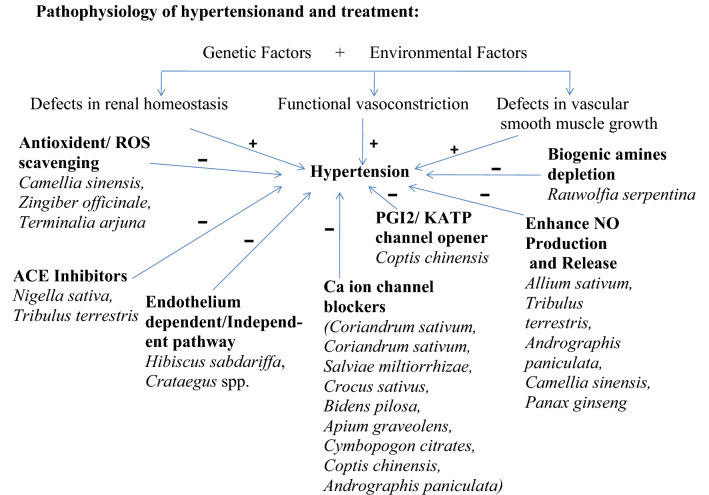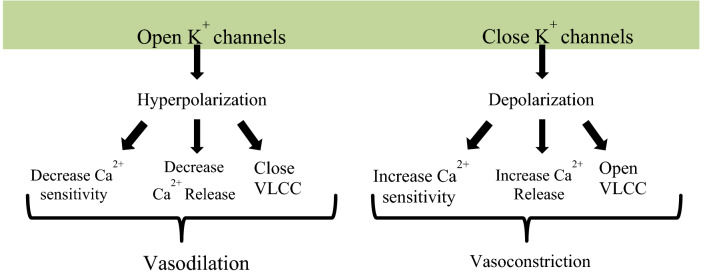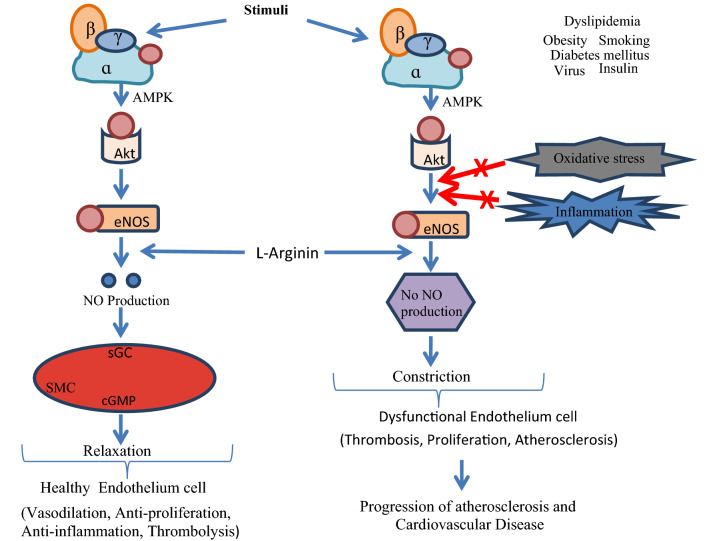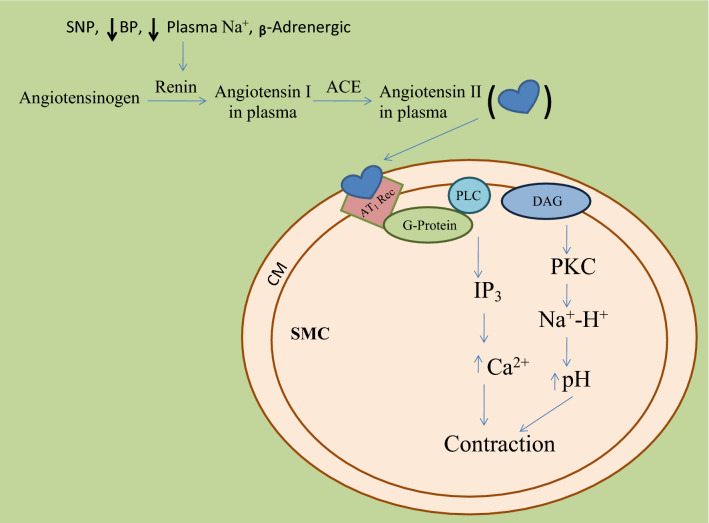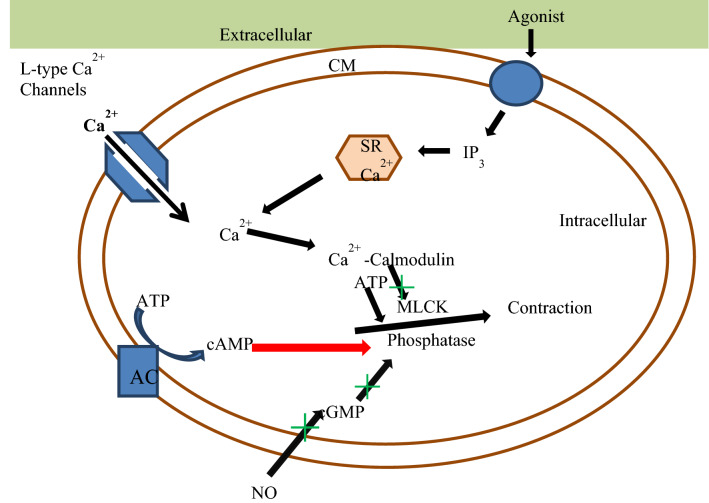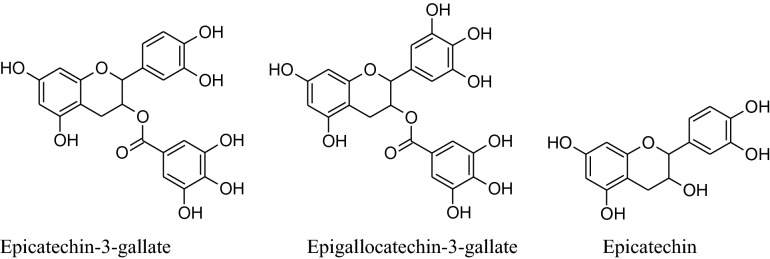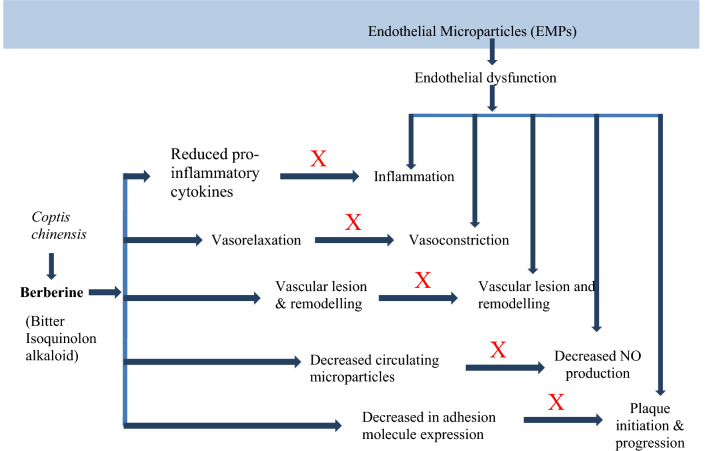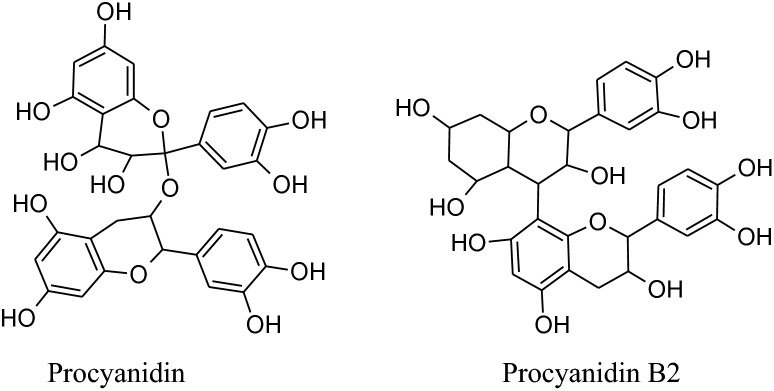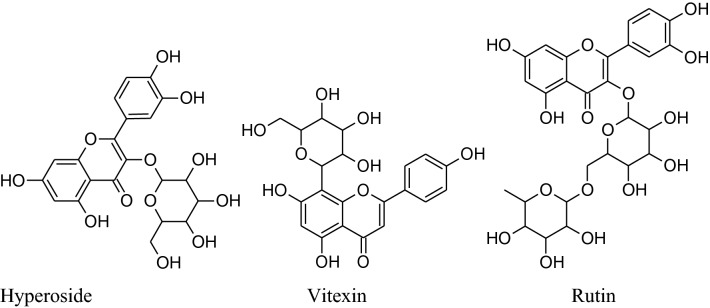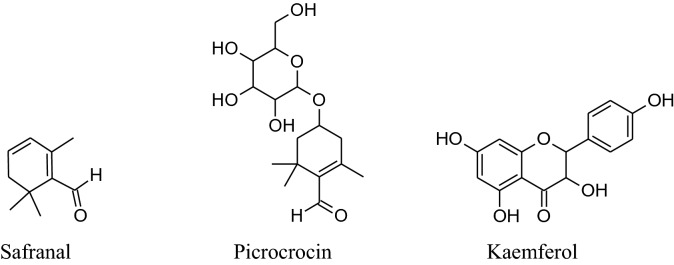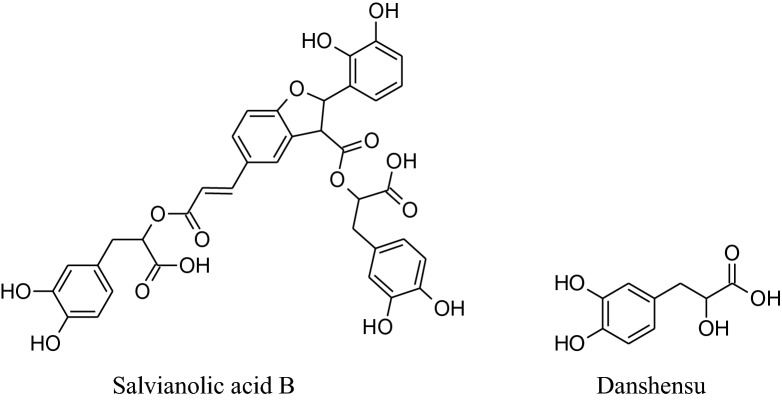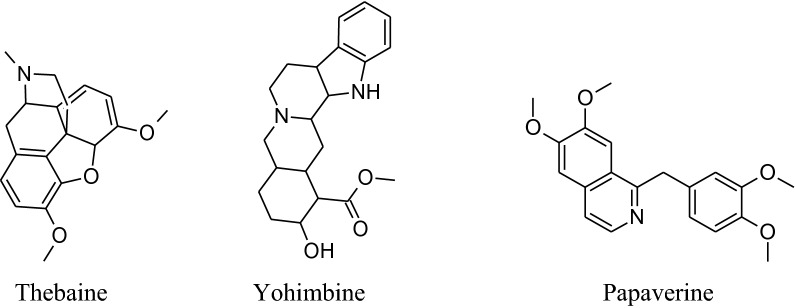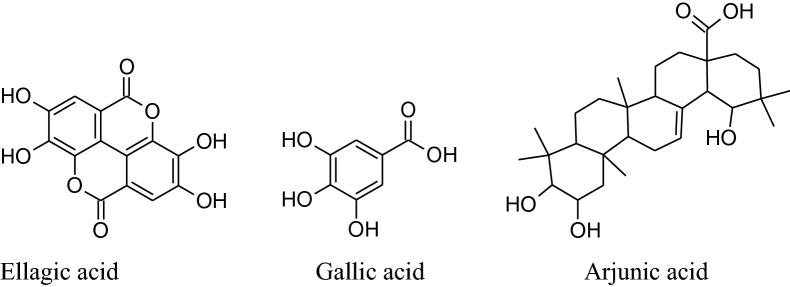Abstract
Abstract
Hypertension is a critical health problem and worse other cardiovascular diseases. It is mainly of two types: Primary or essential hypertension and Secondary hypertension. Hypertension is the primary possibility feature for coronary heart disease, stroke and renal vascular disease. Herbal medicines have been used for millions of years for the management and treatment of hypertension with minimum side effects. Over aim to write this review is to collect information on the anti-hypertensive effects of natural herbs in animal studies and human involvement as well as to recapitulate the underlying mechanisms, from the bottom of cell culture and ex-vivo tissue data. According to WHO, natural herbs/shrubs are widely used in increasing order to treat almost all the ailments of the human body. Plants are the regular industrial units for the invention of chemical constituents, they used as immunity booster to enhance the natural capacity of the body to fight against different health problems as well as herbal medicines and food products also. Eighty percent population of the world (around 5.6 billion people) consume medicines from natural plants for major health concerns. This review provides a bird’s eye analysis primarily on the traditional utilization, phytochemical constituents and pharmacological values of medicinal herbs used to normalize hypertension i.e. Hibiscus sabdariffa, Allium sativum, Andrographis paniculata, Apium graveolens, Bidenspilosa, Camellia sinensis, Coptis chinensis, Coriandrum sativum, Crataegus spp., Crocus sativus, Cymbopogon citrates, Nigella sativa, Panax ginseng,Salviaemiltiorrhizae, Zingiber officinale, Tribulus terrestris, Rauwolfiaserpentina, Terminalia arjuna etc.
Graphic Abstract
Keywords: Hypertension, Antihypertensive herbs, Blood pressure, Vasodilatation, Herbal medicines, Blood pressure regulation
Introduction
Hypertension is a serious medical condition and can increase the risk of heart, brain, kidney and other diseases. It is a major cause of premature death worldwide. Although several modern medicines are used to manage clinical hypertension but it is associated with various side effects. The use of natural herbal drugs with potential antihypertensive activity and fewer side effects can be a good substitute for synthetic drugs when associated with the change in lifestyle and light exercise.
Blood pressure (BP) can be defined as the pressure exercise by blood inside the vessel walls. It is of two types: SBP (systolic blood pressure < 120 mmHg) and DBP (diastolic blood pressure < 80 mmHg). In Hypertension patient SBP increase upper than 140 mmHg or DBP elevateupperthan 90 mmHg. At present, 26.4% population of world suffered hypertension and it is predicted that in 2025 this rate would increase by 60%. Hypertension is mainly of two types (Fig. 1).
Fig. 1.
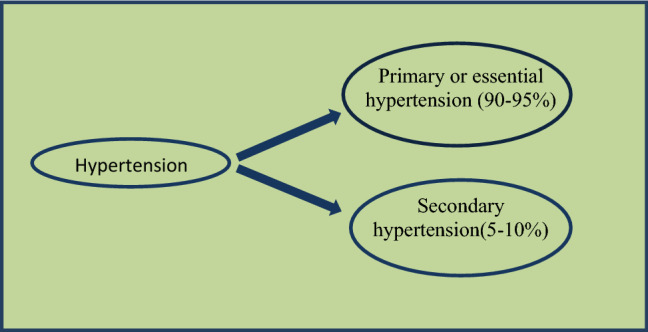
Types of hypertension
Primary or Essential Hypertension (90–95%)
Patientshaveno clear identifiable cause which may contribute to elevation in blood pressure.
Secondary Hypertension (5–10%)
Patients have mainly renal or adrenal disease as the root cause oftheir raised blood pressure [1].Other than this Factors like Nitric oxide NO and cardiac output and peripheral vascular resistance also play important role in hypertension [2, 3].Over aim to write this review is to collect information on the anti-hypertensive effects of natural herbs in animal studies and human involvement as well as to recapitulate the underlying mechanisms, from the bottom of cell culture and ex-vivo tissue data. According to WHO natural herbs/shrubs are widely used in increasing order to treat almost all the ailments of the human body, worldwide [4]. The type of phytochemical constituents present in any natural plant makes it useful to treat a particular ailment or group of ailments. The treatment with medicinal herbs/shrubs is essential and cheaper treatment with lesser rates of side effects as compared to allopathic treatment [5, 6]. Hypertension is a critical health problem and worse other cardiovascular diseases. Diuretics, alone or with other antihypertensive agents are in use regularly, to decline increased blood pressure by decreasing blood volume at the cost of dangerous and undesirable side effects. Interestingly, the use of drugs from natural sources as alternativesis the best choice for the treatment of hypertension and other diseases related to it [7]. Dubick explained that Plants are the regular industrial units for the invention of chemical constituents, they used as an immunity booster to enhance the natural capacity of the body to fight against different health problems as well as herbal medicines and food products also. In cultural, religious and folk traditions, herbal plants are explained as curative remedies for almost all of the ailments [8–10]. Since 1970, native plant medicines are also included in World Health Organization policies mainly for developing countries of the world. According to the United Nations World Health Organization, 80% population of the world (around 5.6 billion people) consumes medicines from natural plants for major health concerns [11, 12]. This review provides a bird’s eye analysis primarily on the traditional utilization, phytochemical constituents and pharmacological values of medicinal herbs used to normalize hypertension [13, 14].
Mechanisms/Pathophysiology of Hypertension
Blood Pressure Regulation
Several parameters like cardiac output, blood volume, the balance of arterial tone etc. of the cardiovascular system can conclude BP. The maintenance of physiological BP levels involves a multifaceted relationship of diverse elements of an incorporated neurohumoral system which includes the natriuretic peptides, renin–angiotensin–aldosterone system (RAAS), endothelium cells, immune system and sympathetic nervous system (SNS). Any imbalance in components of this incorporated neurohumoral system can indirectly or directly cause an increase or decrease in theaverage BP level. Moreover, if this imbalance remains for a long time, leads to damage of thetarget-organ (as CKD and left ventricular hypertrophy) and CVD also.
Different Physiological effectors like Potassium channels [15] (Fig. 2), Nitric oxide (NO) (Fig. 3), renin angiotensin system (Fig. 4), Reactive oxygen species (Fig. 5)and Calcium ions (Fig. 6) modulate the vascular tone and any imbalance in these factors may lead to hypertension.
Fig. 2.
Effect of potassium channels blood vascular system
Fig. 3.
Oxidative stress and role of NOS on blood vascular system
Fig. 4.
Role of ACE in blood pressure regulation. BP blood pressure, PLC phospholipase C, SNP single-nucleotide polymorphism, ACE angiotensin-converting enzyme, DAG diacylglycerol, IP3 inositoltriphosphate
Fig. 5.
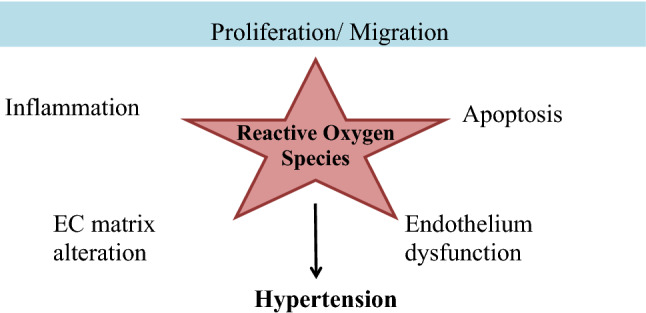
Effect of reactive oxygen species on blood vascular system
Fig. 6.
Mechanism of calcium channel mediated vasoconstriction. CM cell membrane, SR sarcoplasmic reticulum, MLCK Myosin light-chain kinase, ATP adenosine triphosphate, AMP adenosine monophosphate, GMP guanosine monophosphate, NO nitrous oxide, AC adenylate cyclase
Nature has provided or inspired so many lead molecules that can effectively modulate these factors Tables 1 and 2. The following section comprises the details of common traditional herbs having a potential antihypertensive effect.
Table 1.
Commonly used medicinal plants with antihypertensive activity
| S. no | Medicinal herb | Experimental model used | Mechanism of action | Activity | References |
|---|---|---|---|---|---|
| 1 | Allium sativum | Fructose-fed rats | Inhibits ACE | Vasorelaxant | [40] |
| Pulmonary arteries isolated from rat | Increases NO | Vasorelaxant | [37] | ||
| Endothelial cells Human umbilical vein | Increases NO | Vasorelaxant | [38] | ||
| Sprague–Dawley rat aortic rings | Increases H2S | Vasorelaxant | [39] | ||
| VSMCs isolated from SHR | Reduce ang-II- enhanced cell cycle progression | Anti-proliferative | [43] | ||
| Fructose-fed rats | Reduces NADPH activity | Antioxidant | [77] | ||
| Human neutrophils | ROS scavenging | Antioxidant | [78] | ||
| 2 K-1C rats | Affects ant oxidation | Antioxidant | [79] | ||
| Fructose-fed Wistar rats | Increases eNOS | Vasorelaxant | [77] | ||
| Fructose-fed Wistar rats | Reduces VCAM-1 | Anti-inflammatory | [77] | ||
| Thoracic aortic VSMCs of sprague–Dawley rat | Induces Cx43 expression | Anti-proliferative | [80] | ||
| High fructose-fed rats | Inhibits NF-κB | Anti-inflammatory | [81] | ||
| 2 | Andrographis paniculata | SHR | Scavenges ROS | Antioxidant | [49] |
| SHR | Reduces ACE | Vasorelaxant | [49] | ||
| Sprague–Dawley rats isolated hearts | Increases NO | Vasorelaxant | [44] | ||
| Sprague–Dawley rats isolated hearts Sprague–Dawley rats | Blocks Ca2+ channels | Vasorelaxant | [44] | ||
| Npr1 gene-knockout mice | Inhibits NF-κB | Anti-inflammatory | [82] | ||
| 3 | Apium graveolens | Rat isolated aortic rings | Blocks Ca2+ channels | Vasorelaxant | [58] |
| CCl4-treated mice | Amplify antioxidants | Antioxidant | [59] | ||
| 4 | Camellia sinensis | Coronary heart patients’s brachial arteries | Increases flow-mediated dilation (FMD) | Vasorelaxant | [83] |
| Coronary heart patients’s brachial arteries | Increases flow-mediated dilation (FMD) | Vasorelaxant | [84] | ||
| Superoxide-generating system | Scavenges ROS | Antioxidant | [85] | ||
| In vitro endothelial cells | Reduces VCAM-1 | Anti-inflammatory | [86] | ||
| Human endothelial cells | Inhibits NF-κB | Anti-inflammatory | [73] | ||
| STZ fed SHR | Decreases NADPH oxidase | Antioxidant | [87] | ||
| Strong man smokers (preclinical pilot) | Increases NO | Vasorelaxant | [72] | ||
| Diabetic SHR | Inhibits eNOS uncoupling | Vasorelaxant | [88] | ||
| Obese, hypertensive humans | Decreases TNF-α | Anti-inflammatory | [89] | ||
| STZ-fed Sprague–Dawley rats | BlocksAT1 receptor | Vasorelaxant | [90] | ||
| Sprague–Dawley rats nourished with streptozotocin (STZ) | Increases antioxidants | antioxidant | [90] | ||
| STZ fed SHR | Hampered eNOS separation | Antioxidant | [88] | ||
| C57BL/6 mice | Amplify antioxidants | Antioxidant | [91] | ||
| Human aortic smooth muscle cells | Increases HO-1 enzyme | Anti-proliferative | [92] | ||
| 5 | Coptis chinensis | Rat aortic endothelial cells | Decreases NF-κB | Anti-inflammatory | [93] |
| Rat aortic endothelial cells | Inhibits VCAM-1 | Anti-inflammatory | [93] | ||
| Hale and hearty humans | Decreases EMP | Vasorelaxant | [94] | ||
| Cardiomyocytes of rat (hypertrophy stimulated by insulin) | Upregulates eNOS expression | Vasorelaxant | [95] | ||
| CIHH rats’s thoracic aorta rings | Upregulates eNOS expression | Vasorelaxant | [95] | ||
| CIHH rats’s thoracic aorta rings | Blocks Ca2+ channels | Vasorelaxant | [95] | ||
| Cardiomyocytes of rat (hypertrophy stimulated by insulin) | Inhibits cardiac hypertrophy | Anti-proliferative | [95] | ||
| Wistar rats with atherosclerotic renovascular sickness (ARD) | Increases antioxidants | Antioxidant | [96] | ||
| ARD Wistar rats | Declined NADPH oxidase | Antioxidant | [96] | ||
| Atherosclerotic renovascular rats | Decreases NF-κB | Anti-inflammatory | [96] | ||
| 6 | Coriandrum sativum | CCl4- induced hepatotoxicityin Wistar albino rats | Increases antioxidants | Antioxidant | [97] |
| Decreases NF-κB | LPS-stimulated RAW 264.7 | Anti-inflammatory | [98] | ||
| Male Wistar rats with cardiotoxicity induced by isoproterenol | Inactivation of ROS production by b-adrenoceptor stimulation | Antioxidant | [99] | ||
| 7 | Crataegus spp. | Hypertensive rats (Induced by L-NAME) | Activates eNOS | Vasorelaxant | [100] |
| Aortic rings of male Wistar rat | Activates eNOS | Vasorelaxant | [101] | ||
| Mammalian arterial rings | Activates eNOS | Vasorelaxant | [101] | ||
| Enzymatic assay | Scavenges ROS | Antioxidant | [102] | ||
| Rats with diabetes produced by STZ | Decreases TNF-α | Anti-inflammatory | [103] | ||
| Rats with diabetes produced by STZ | Decreases IL-6 | Anti-inflammatory | [103] | ||
| 8 | Crocus sativus | Swiss albino mice treated with genotoxins | Enhanced antioxidants | Antioxidant | [104] |
| Guinea pig isolated heart | Blocks Ca2+ channels | Vasorelaxant | [105] | ||
| BeCl2-treated Wistar rats | Reduces oxidative stress | Antioxidant | [106] | ||
| BeCl2-treated Wistar rats | Increases antioxidants | Antioxidant | [106] | ||
| Rats with ischemia–reperfusion | Activates eNOS | Vasorelaxant | [107] | ||
| Rats with ischemia–reperfusion | Inhibits NF-κB | Anti-inflammatory | [107] | ||
| 9 | Hibiscus sabdariffa | Healthy men | Lowers uric acid concentration | [108] | |
| SHR isolated aorta | Increases NO | Vasorelaxant | [23] | ||
| SHR isolated aorta | Blocks Ca2+ channels | Vasorelaxant | [23] | ||
| Hypertensive humans in stage 1 and 2 | Reduces plasma Na+ levels | [30] | |||
| Rat liver with hepatotoxicity induced by CCl4 | Scavenges ROS | Antioxidant | [109] | ||
| Healthy humans | Enhances antioxidants | Antioxidant | [110] | ||
| Not clear | Increases NO | Vasorelaxant | [111] | ||
| PDGF-treated rat VSMCs | Inhibits ERK pathway activation | Anti-proliferative | [112] | ||
| SHR thoracic aortic VSMCs | Diminished pRb, CDK4 and cyclin D1 | Anti-proliferative | [113] | ||
| SHR thoracic aortic VSMCs | Decreases β-galactosidase | Anti-proliferative | [113] | ||
| SHR | Lowers uric acid concentration | [111] | |||
| 10 | Panax | Hypoxia/reoxygenation-oxidative injured cardiomyocytes of rat | Increases antioxidants | Antioxidant | [114] |
| Mouse cardiomyocytes | Reduces NF-κB | Anti-inflammatory | [115] | ||
| Mouse macrophages | Reduces NF-κB | Anti-inflammatory | [116] | ||
| Mouse macrophages | Decreases TNF-α | Anti-inflammatory | [116] | ||
| Mouse macrophages | Decreases IL-6 | Anti-inflammatory | [116] | ||
| 11 | Salviae miltiorrhizae | CHD patients | Increases antioxidants | Antioxidant | [117] |
| Thoracic aortic VSMCs of Sprague–Dawley rat | Reduces ROS | Antioxidant | [118] | ||
| Endothelial cells of Human umbilical vein | Decreases TNF-α | Anti-inflammatory | [118] | ||
| Endothelial cells of Human umbilical vein | Inhibits NF-κB | Anti-inflammatory | [118] | ||
| Endothelial cells of Human umbilical vein | Inhibits VCAM-1 | Anti-inflammatory | [118] | ||
| Sprague–Dawley rat thoracic aortic VSMCs | Inhibits PDGF proliferation | Anti-proliferative | [118] | ||
| 12 | Zingiber officinale | Enzymatic assay | Scavenges ROS | Antioxidant | [119] |
| Rat heart | Inhibits lipid peroxidation | Antioxidant | [120] | ||
| 13 | Bidens pilosa L | High-fructose fed Wistar rats | Mechanism not determined | Vasorelaxant | [64] |
| LPS-stimulated RAW 264.7 | Inhibits NF-κB | Anti-inflammatory | [121] | ||
| LPS-stimulated RAW 264.7 | TNF-α activation | Anti-inflammatory | [122] | ||
| 14 | Mammea africana | l-NAME-induced hypertensive rats | Ca2+ antagonists | Vasorelaxant | [123] |
| 15 | Cymbopogon citratus | Rat isolated thoracic aorta | Inhibits Ca2+ influx | Vasorelaxant | [124] |
| Rat isolated thoracic aorta | Increases NO bioavailability | Vasorelaxant | [124] | ||
| Isolated aorta from WKR | Increases NO bioavailability | Vasorelaxant | [125] | ||
| SHR isolated aorta | Increases NO bioavailability | Vasorelaxant | [125] | ||
| 16 | Nigella sativa | SHR isolated aorta | Enhances K+, Na+ and Cl− in urine | [126] | |
| 17 | Agastache Mexicana | Rat thoracic aorta | NO overproduction | Vasorelaxant | [127] |
| 18 | Cocos nucifera | Salt-induced hypertensive male Wistar rats | nitric oxide production | Vasorelaxant and antihypertensive | [128] |
| 19 | Lepidium sativum | WKY and SHR rats | Na + excretion increased in urine | Antihypertensive and diuretic | [129] |
| 20 | Laelia autumnalis | Rat aortic rings isolated | Ca2 + Channels blockade | Vasorelaxant | [130] |
| 21 | Carum copticum | Preparations rabbit aorta and jejunum, rat thoracic aorta | Calcium antagonism | Antihypertensive | [131] |
| 22 | Olea europaea | Dahl salt-sensitive rat | Angiotensin II inhibition | Antihypertensive | [132] |
| 23 | Hsian-tsao | Male SHRs | Increased antioxidant activities | Antihypertensive | [133] |
| 24 | Eucommia ulmoides | Dog carotid and rat aortic rings | Nitric oxide production | Vasorelaxant | [134] |
| 25 | Phyllanthus urinaria | Spontaneously hypertensive rats | ACE Inhibitors | Antihypertensive | [135] |
| 26 | Tropaeolum majus | SHR | Angiotensin II inhibition | Antihypertensive | [136] |
| 27 | Fritillaria Ussuriensis | Rat aortic rings | ACE inhibition, increased NO/cGMP level | Antihypertensive | [137] |
| 28 | Laelia anceps | SHR aortic rings | Ca2+ channels blockade | Vasorelaxant and antihypertensive | [138] |
| 29 | Guazuma ulmifolia | Sugar nourished hypertensive rats | Nitric oxide production | Antihypertensive | [139] |
| 30 | Lepechinia caulescens | Rat thoracic aorta | Nitric oxide liberation | Vasodilator | [140] |
| 31 | Elettaria cardamomum | Preparations of rabbit jejunum | Ca++ antagonism | BP lowering effect | [141] |
| 32 | Aronia mitchurinii | SHR | ACE inhibition | BP lowering effect | [142] |
| 33 | Momordica charantia | Rats | Mediate NO/cGMP production | Hypotensive | [143] |
| 34 | Clerodendron trichotomum | Rat plasma | ACE inhibiter | Antihypertensive | [144] |
| 35 | Tanacetum vulgare | Wistar rat aorta | NO production enhancer | Vasorelaxing | [145] |
| 36 | Cecropia pachystachya | Rats hearts | Na,K-ATPase pump stimulator | Cardiotonic | [146] |
| 37 | Eugenia uniflora | Rats hearts | Ca++ antagonism | Hypotensive | [147] |
| 38 | Geum japonicum | Rat thoracic aorta | Mediate NO/cGMP production | hypotensive | [148] |
| 39 | Cirsium japonicum | Rat thoracic aorta | Nitric oxide production enhancer | Vasorelaxation | [149] |
| 40 | Astragalus complanatus | Hypertensive rats | Ang II receptor blocker | Antihypertensive | [150] |
| 41 | Citrus limetta | Mice | Ang II receptor blocker | BP lowering effect | [151] |
| 42 | Achillea millefolium | Anesthetized rats | ACE inhibitior | Antihypertensive | [152] |
| 43 | Averrhoa carambola | Rat aorta | Ca2+ inhibitior | Hypotensive | [153] |
| 44 | Valeriana wallichii | Preparations of rabbit jejunum | k+ channel activation | BP lowering effects | [154] |
| 45 | Erythroxylum gonocladum | Rat plasma | ACE inhibitior | Antihypertensive | [155] |
| 46 | Cudrania tricuspidata | Rats with NO synthesis inhibition | NO/cGMP overproduction | Antihypertensive | [137] |
| 47 | Antrodia camphorata | Rat aortic rings | NO/cGMP overproduction | Antihypertensive | [156] |
| 48 | Melothria maderaspatana | Hypertensive rats | Increased vitamin C utilization | Antihypertensive | [157] |
| 49 | Solanum torvum | Rat aorta | Calcium influx blocked | Antihypertensive | [158] |
| 50 | Echinodorus grandiflorus | Perfused kidney and aorta of rabbit | Nitric oxide production | Vasodilator | [159] |
| 51 | Polyalthia longifolia | Rats fed egg yolk | ACE inhibition | Reduced BP | [160] |
| 52 | Jatropha gossypiifolia | Rat aorta | Ca2+/NE antagonism | Antihypertensive | [161] |
| 53 | Salvia cinnabarina | Male Wistar rats | Nitric oxide production | Lower BP | [162] |
Table 2.
Completed clinical trials of different medicinal plant as anti-hypertensive agents
| S. No | Herb | Dose/duration | Condition | Design/population size | Result/magnitude of result | References |
|---|---|---|---|---|---|---|
| 1 | Allium sativum | 2600 mg/day garlic powder/10 days | Mild hypertension | Placebo-controlled, crossover/6 | SBP diminish/17 mmHg | [38] |
| 960 mg/day AGE/12 weeks | Uncontrolled hypertension | Double-blind, randomized, parallel, placebo-controlled/50 | SBP diminish/10.2 ± 4.3 mmHg | [172] | ||
| 480 mg/day AGE/ 12 weeks | Uncontrolled hypertension | Double-blind, randomized, parallel, placebo-controlled/79 | SBP diminish/11.8 ± 5.4 | [173] | ||
| 300–1500 mg/day powdered garlic/4 weeks | Stage 1 hypertension | Randomized, parallel, placebo-controlled/210 | SBP and DBP diminish/9.2 and 6.26 mmHg | [174] | ||
| 2 | Camellia sinensis | 7.6 g tea leaves boiled in 400 ml water/1 h | Mild hypertension | Double-blind, placebo-controlled/20 | SBP and DBP enhance/1.7 and 0.9 mmHg (green tea) 0.7 mmHg each (black tea) | [175] |
| 379 mg green tea extort/ 12 weeks | Obese, hypertension | Randomized, parallel, placebo-controlled/56 | SBP and DBP diminish/4 each mmHg | [89] | ||
| 4479 mg (3 cups/day, 1493 mg each) black tea/ 24 weeks | Mild hypertension | Randomized, parallel, placebo-controlled/95 | SBP and DBP decrease/2 and 2.1 mmHg | [176] | ||
| 3 | Crataegus spp. | 500 mg/day extort/ 10 weeks | Mild hypertension | Double-blind, randomized, parallel, placebo-controlled/36 | DBP/13.1 mmHg | [170] |
| 2.7–3 mg/day flavonoids (Hydro-alcoholic extract)/4 months | Mild hypertension | Double-blind, randomized, parallel, placebo-controlled/92 | SBP and DBP diminish/13 & 8 mmHg | [177] | ||
| 4 | Crocus sativus | 400 mg/day/7 days | Healthy | Double-blind, randomized, parallel, placebo-controlled/30 | MAP & SBP diminish/11 & 5 mmHg | [178] |
| 5 | Hibiscus sabdariffa | 10 g/day dehydrated calyx/4 weeks | Mild to moderate hypertension | Randomized, captopril-controlled 75 | SBP & DBP diminish/15.32 & 11.29 mmHg | [29] |
| 720 mL/day (3 times, 240 mL each) tea form/6 weeks | Pre- and mild hypertension | Randomized, double-blind, placebo-controlled/65 | MAP, SBP, & DBP diminish/7.2, 3.1, & 4.5 mmHg | [31] | ||
| 6 | Nigella sativa | 200 & 400 mg/day seed extract aqueous (100 and 200 twofold a day)/8 weeks | Mild hypertension | Randomized, double-blind, placebo-controlled/108 | SBP & DBP diminish/2.2 & 1.1 mmHg LDL-cholestrol reduction | [179] |
| 5 mL/day (2.5 double a day) Nigella sativa oil/8 weeks | Healthy | Double-blind, randomized, parallel, placebo-controlled/70 | SBP & DBP diminish/ 10.6 & 9.6 mmHg | [180] | ||
| 7 | Panax | 3 g/day P. quinquefolius/12 weeks | Essential hypertension | Randomized, double-blind, placebo-controlled/64 | SBP decrease/17.4 mmHg | [181] |
| 300 mg/day P. ginseng extract/8 weeks | Mild hypertension | Randomized, placebo-controlled/ 90 | SBP and DBP decrease/3.1 and 2.3 mmHg | [182] | ||
| 400 mg/ 3 h | Healthy | Randomized, double-blind, crossover/23 | SBP and DBP decrease/4.8 and 3.6 mmHg | [183] |
Hibiscus Sabdariffa (HS) (Family: Malvacae; Common Name: Rosella, Hibiscus, Jamaica Sorrel, Red Sorrel) [16–19]
The various part of this plant like flower, leaves and calyxareare used for thetreatment of various medicinal problems in manyWest African countries [20]. Due to its pleasing taste, decorative appearance, medicinal and culinary effect, HS is used worldwide to produce many types of modern cold and hot drinks. Tender young leaves, calyx and stems are used as salads in raw or cooked form. At many places, calyx is used to prepare soups, pickles, sauces, pudding and also as flavoring agents. The Nigerian citizens used calyx infusion (zobo) as an antihypertensive agent.
Experimental studies showed that HS has antimicrobial, antioxidant, anticholesterol, antihypertensive activity [21]. The people of Jordan’s North Badialocality use leaves and flowers of HS, and according to them, hot aqua infusions are used to treat elevated blood pressure while cold infusions for lower blood pressure [22]. In Tobago and Trinidad area’s resident’s leaves are used to treat hypertension while the flower and seeds are used forhypocholesterolemic effect [23, 24].
Previous studies showed that on treatment with HS the SBP and DBP level declined dose dependently in salt induced hypertensive and in the normotensive group [25]. When comparing to ACE-inhibitors, it was equally effective to captopril [26] but less effective than lisinopril [27].
From different studies, it is found that extract of calyces of HS has antihypertensive and vasodilator effect in human and experimental animalsviavasodilator pathways dependent and independent on theendothelium. The opening of thecGMP/nitric oxide-relaxant pathwayis derived via endothelium causesendothelium-dependent vasodilation by activation of guanylate cyclase whereas inhibition of Ca2+ influx is responsible for endothelium independentcomponent [20].
The watersoluble active constituents of HS, anthocyanins, predominantlycyanidin-3-sambubiosideand delphinidin-3-sambubioside, are responsible for the hypocholesterolemic, antioxidant & antihypertensive effects [24, 26–29].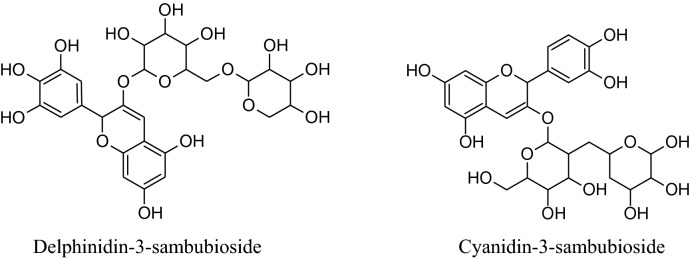
Allium Sativum: (Common Name: Garlic; Family: Alliaceae or Liliaceae) [30, 31]
The bulb of A. Sativum is a multipurpose spice or herbpopularly used for thousands of yearsas a vegetable because of its strong flavor and taste worldwide. It is an herb of interest for the treatment of cardiovascular diseases (CVDs) like coronary heart disease, hypertension, atherosclerosis and age-related vascular changes [32]. It can also use as an antioxidant, anti-cancer, anti-inflammatory, antibacterial, and hypocholesterolemic. All these pharmacological activities make it interesting for pharmacologists and health practitioners.
The presence of organosulfur constituents like allicin (major active constituent), ajoene, S-allyl-l-cysteine, diallyl disulfides (DADS), methyl thiosulfonate and diallyl trisulfides etc. are responsible for these pharmacological activities.Allium Sativum can be utilized in diversevarietiessuch as raw,dried powder, aqueous extract, oil and aged garlic extract(AGE) form. Mata analysis interpretation confirmed that AGE produces a dependable lowering of blood pressure (both SBP and DBP) compared to other forms of A. Sativum [33].
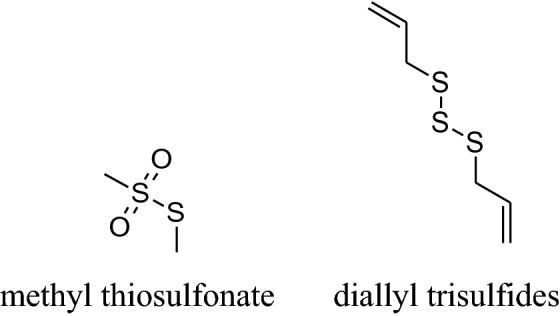
Ku et al. and Mousa and Mousa reported that garlic’s ethanolic extract caused relaxationby sulfide components like allicin in pulmonary arteries of rat viaincreasing the NO bioavailability [34, 35]. Benavides et al. reported that garlic provides polysulfides to red blood cells to boost H2S production and synthesis results vasorelaxation [36].
Moreover, Sendlet al. reported that garlic’s component gamma-glutamyl-cysteines acts asan antagonist to inhibit ACE activity [37]. When Alliin reacts with the Alliinase enzyme, Allicin antagonizesthe endothelin-1 effect, decreases vasoconstrictor responses of Ang II anddeactivate NF-kB [33, 38–42].
Andrographispaniculata: (Common Name: Kalmegh, Kirayat, Bhunimba, King of Bitter; Family: Acanthaceae)
This is a traditional medicinal plant of eastern and southeastern Asia commonly used for treating cold, fever [43], upper respiratory and gastrointestinal tract infections, hepatitis, herpes and CVDs [44].
Andrographis paniculate actsby inhibitingthe activity of β- adrenoceptors, autonomic ganglion receptor and angiotensin converting enzyme (ACE) [45]. Its extracts contain several diterpenoid compounds i.e. 14-deoxy- 11,12-didehydroandrographolide, andrographolideand14-deoxyandrographolide [46] responsible for anti-inflammatory,bactericidal [47], antioxidant and hypotensive effects. Its chloroform extract can activate NO synthesis and finally stimulate NO production in endothelial cells which ultimately cause relaxation in smooth muscles by inhibiting Ach action [48]. A. paniculatadecrease BP by decreasing reactive oxygen species and ACE activities in impulsively hypertensive rats (SHR) [44]. According to Awang et al. [46] found that vascular resistance reduced in isolated rat heart by both 14- deoxyandrographolide and 14-deoxy-11,12-didehydroandrographolide. According to them, crude extract containing a high concentration of 14-deoxy-11,12-didehydroandrographolide produce remarkable hypotensive propertyvia increased NO release which is responsible for vasodilation. Moreover, 14-deoxy-11,12- didehydroandrographolide decrease the level of Ca2+ inside cell by voltage-gated Ca2+ channels.The chloroform extract of Andrographis paniculata blocks the L-type Ca2+ current and high K+ activation pathways produced endothelial protective effects to relax the smooth muscle and the results were comparable to verapamil [33, 49–51].
Apiumgraveolens (Celery): (Common Name: Celery, Ajmod; Family: Umbelliferaeor Apiaceae)
It is anyearly or permanent herbs commonly found in sub-tropical and temperate parts of Asia and Africa. Different parts ofApium graveolens are used for the preparation different medicinal formulations because of its anti-inflammatory, anti-hypertensive, anti-microbial, bactericidal, fungicidal, anti-cancer, anti-virus, gastro-intestinal, anti-spasmodic and anti-oxidant properties [52].
In vivo animal studies showed that A. graveolens hasa hypotensive effect [33]. According to Moghadam et al. its hexaneextracts of seed decrease blood pressure more effectively in hypertensive rats than its additional extracts [53]. This is because of betterpreservation of n-butylphthalide, which is responsible for the flavor and aromatic odor of celery. This effect of n-butylphthalide was also supported by SHRs [54]. According to Ko et al. apigeninflavoneextracted form effect voltage and receptor gated channels via blocking of Ca2+ influxwhich in result block aortic ring contractions in the isolated aorta of rat [55]. Houston reported that active components of celery lower human arterial pressure probably by the declining the intensity of circulating catecholamines and lowering vascular resistance [56]. Fazal et al. reported that daily use of seed extract for 4 weeks can reduce blood pressure by 12% [57]. Moreover, Popovic et al. reported that the flavonoid content of this herb reduces oxidative stress which can potentiate antioxidant mechanisms [33, 58]. Moghadam et al. confirmed that celery seeds have a hypotensive effect due to some hydrophobic components, such as n-butylphthalide (NBP) [50, 53]. It can also use to treat hypertension associated with the liver [51].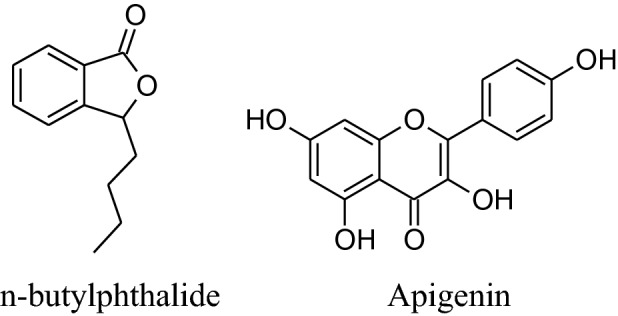
Bidenspilosa L. (Common Names: Broom Stick, Beggar’stick and Black-Jack; Family Asteraceae)
The whole plant of B. pilosaplant are used as components in folk medicines in different form as a tincture, dry powder, maceration or decoction.
The bioactive components have many health benefits andused inbacterial, cancer, obesity, hypertension, malarial and cardiovascular diseases [12, 59] which make it plant of interest nowadays. Different parts of Bidens pilosa contain numerous useful chemical constituents with at least 60 flavonoids [12]. So, normally extracts of this plant are used as medicine to treat around 40 categories of illnesses [12, 60] by different expected [2] mechanism like vasodilatation, lipid profileimproving, free radicals scavenging insulin-sensibility,calcium blocker etc.[61–64]. Previous studies have confirmed that quercetin increases the NO production and/or bioavailability which improved endothelium function. Additionally, Bilanda et al. supported it that quercetin can attenuate and prevent hypertension [2]. Bidens pilosa’s methylene chloride and aqueous extracts inverted the hypertriglyceridemia and high blood pressure produced by fructose feeding but does not affect plasma levels of glucose and insulin but a fewexperiments showing effect on insulin sensitivity [12, 61]. According to Gulfsha et al. high doses of leaf extracts of Bidens pilosacan decreaselevels of plasma creatinine which in result increases the level of plasma cholesterol. So, they suggested that Bidens pilosa’s hypotensive effect is independent of insulin sensitivity [65].
According to Dimo et al. aqueous and CH3Cl leaves extort of Bidens pilosa can attenuate and averthigh blood pressure in various normotensive and hypertensive rat models (induced by fructose) for a 3-week continuous treatment [2, 66]. Dimo et al. and Bartolome et al. proved that B. pilosa has vasorelaxant responses [12, 61] and it is also supported by Nguelefack et al. as they reported mounting amounts of a neutral to extort of B. pilosacauserelaxation in noradrenaline and potassium chloride pre-constricted aortas of a rat. But they did not interpret a clear mechanism to explain vasodilation [67]. Their assumptions were vasodilation possibly happen either by calcium channel antagonism or involve cyclooxygenase metabolite [33]. They also mentioned that mechanism of vasodilation was not associated with the ATP-dependent K+ channel [12, 67].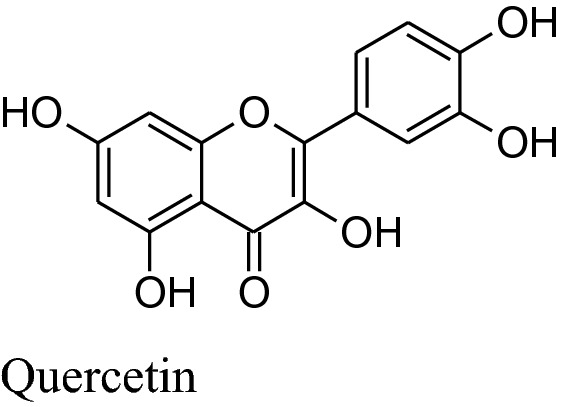
Camellia sinensis (Common Name: Tea; Family: Theaceae)
New clean and bright leaves of Camellia assamicaor Camellia sinensisarecharacteristically processed to prepare the most frequently consumed beverages i.e. tea, worldwide which is next to the water.
The major flavonoids of tea are catechins which include (−)-epicatechin-3-gallate (ECG), (−)-epigallocatechin-3-gallate (EGCG), (−)- epicatechin (EC), (−)- epigallocatechin (EGC, primary component) [68]. These catechins are converted to flavins and the arubigins, by an enzymatic reaction, are known as effective vasodilators. These catechins are also responsible for major elevation in blood flow by increased liberation of NO through a simultaneous decline in intensities of oxidative stress and dimethylarginine [69]. Moreover, Hong et al. reported that EGCG was capable of reduceactivation of an NF- kB in endothelial cells of humans. It has the secondary metabolites like purine alkaloids, phenolic acids, flavan-3-ols, flavonols, saponins, hydrolyzable tannins, and condensed tannins as well as their glycoside forms. Many chemical constituents such as flavan-3-ols derivatives, theaflavins, thearubigins, etc. are emerged to form new constituents with a change in the concentration of others.Sodepending on the process each type of tea has different flavorsand constituents. Aqueous extract of Camellia sinensis can produce pleiotropic effects as well as anti-diabetic, anti-inflammatory antibacterial, antihypertensive and anti-cancer activities [70]. Deka and Vita, according to them the person consuming regularly green and black tea having a minor risk of hypertension [68]. Peng et al. also reported based on meta-analysis that regular use of tea has a major decreasing result on diastolic blood pressure (DBP) [71], other studies showed that it is concentration dependent [72]. According toa Japanese group analysis, regular consumption of concentrated, only green tea can reduce the CVD mortality risk [73]. The o-methylated EGCG content of tea can inhibit angiotensin-converting enzyme therefore consumption of black tea extract by regular 7 days has a decreasing effect on systolic blood pressure (SBP). Cheang et al. on basis of their study explain that theaflavin-3,3-digallate can inhibit acetylcholine dependent contraction and enhance endothelial functionby reducingthe stress of endoplasmic reticulum and modifyingHcyenzymes such as cystathionine gamma-lyase and cystathionine-β-synthase. By consumption of lyophilized extract of green tea, a majordecline in SBP (− 4.9 mmHg) andDBP (− 4.7 mmHg) in slightly hypertensive patients [74, 75]. According to Peng et al. gree tea can reduce blood pressure by different mechanisms such as by maintaining balance among vasoconstricting, vasodilating and hyperpolarizing factors [71]. It has a rising effect on the production of nitric oxide (NO) to enhance ventricular function and manage ROS production by provoking antioxidant enzymes and reducing pro-oxidant enzymes [76].
Coptis chinensis (Family: Ranunculaceae, Common Name: Chinese Gold Thread)
It is utilized in Chinese folk medicine. Main chemical constituent of Coptis chinensis is berberine which is responsible for its major pharmacological activities such as sedative, immunostimulatory, hypotensive, antimicrobial, choleretic, anticonvulsant, uterotonic, antihelminthic, anticancer and carminative activities. Moreover, it also affects lipid and carbohydrate metabolism, cardiotonicity and endothelial function. Because of all these activities, in the last decade, this alkaloid is a point of interest for researchers [76].
Lan et al. confirmed that berberine has a major hypotensive effect by numerous mechanisms. BBR raises the expression of enzyme eNOS which is associated with synthesis and release of NO followed by vasodilation. This vasodilation is possibly arbitrated by well known vasodilator PGI2 and KATP channels opening as well as Ca2+ influx blockage. One study reported thatBBReffects endothelial dysfunction by reducing the maturity of endothelial microparticles. Berberine can also inhibit transcription factor NF-kB and VCAM-1expression as well as VSMC proliferation [163] (Fig. 7).
Fig. 7.
Mechanism of action of berberine
Coriandrum sativum (Family: Umbelliferae/Apiaceae; Common Name: Kasbour, Coriander, Cilantro) [164]
The fruits and leaves of C. sativum and C. tordylium are used in the conventional treatment of different gastrointestinal and heart diseases and as well as catering ingredient.Its oil is used in many cosmetics formulation. Usually, C. sativum used for the treatment of many GIT disorders likeflatulence, diarrhea, anorexia, dyspepsia, vomiting and pain as well as an antihypertensive, antiseptic,antiemetic, myorelaxant, antidiabetic, anti-inflammatory, emmenagogue, lipolytic and possess nervesoothing effect.
The major chemical constituents of coriander are linalool, geranyl acetate and gamma-terpinene. It also have other chemical constituents like a-cedrene (3.87%), citronellal (1.96%), geraniol (1.87%), b-pinene (1.82%), b-sesquiphell-andrene (1.56%), citral and Citronellyl acetate (1.36% each), citronellol (1.31%), m-cymene (1.27%) and a-farnesence (1.22%) as minor. Till date coriander havebeen not tested in clinical trials to evaluate its result on BP but, it is reported in many studies that coriander shows antioxidant activities and inhibits ROS production by b-adrenoceptor. Jabeen et al. reported that vasodilatory effects of dilute methanolic extort of well dried seeds and powder of coriander produced and mean arterial blood pressure, SBP and DBP fall in a dose-dependent manner in normotensive Sprague–Dawley rats [165]. The vasodilator effect occurs through Ca++ channel blockade and endothelial-dependent pathways [166]. The active constituents act synergistically to balance vasoactive constituent for management and treatmentof hypertension.Also, coriander extract has an inhibitory effect on NF-kB and Inos [166].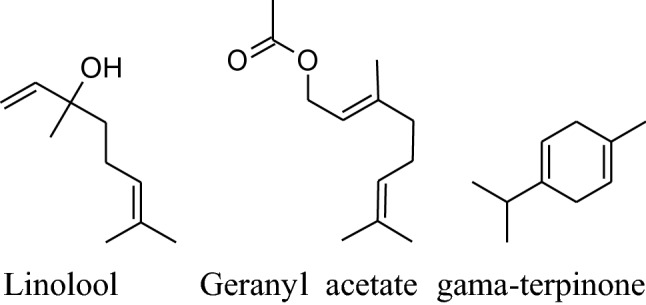
Crataegus spp. (Genus: CrataeguscrenulataSyn., Pyracanthacrenulata; Family: Rose; Common Name: Hawthorns, Hawberry or Thorn Apple)
Hawthorns shrubs areemployed in conventional medicine for long years for the handling of CVDs. Walker et al. reported that hawthorns drug (500 mg for regular 10 weeks) can decreases in DBP in hypertensive patients [167]. According to Bone and Mills major reduction in BP occurs only after administration of drug in higher doses for longer duration of time [168].
Asgary et al. run a random, placebo-controlled, double-blind clinical trial by the administration of Crataegus curvisepala’shydro-alcoholic extracts of flowers for three months found that both DBP and SBP decreased by around 8 and 13 mmHg, respectively. The major chemical constituent of Crataegustanacetifoliaisquercetin, a polyphenolic flavonoid, which is responsible for its major pharmacological functions a vasorelaxant, anti-inflammatory and anti oxidanteffects.Other multiple components of these plants are oligomeric proanthocyanidinsi.e. procyanid in, procyanidin B-2, hyperoside etc. and flavonoids i.e. vitexin,rutin, etc. Moreover, extracts of hawthorn iseffectual on both endothelial cells and VSMCs. Crataegustanacetifolia’sextract cause vasodilation by increasing phosphorylation and activation of eNOS at serine1177 which in result enhances synthesis and release of NO in endothelial cells [169]. Anselm et al. informed that flower and leaves extract and segregate, hyperosideof Crataegus, probably, can activate multiple signaling pathways, as PI3-kinase,eNOS, Src, ROS, Akt and up-regulation of antioxidant enzymes (CAT, SOD) to produce endothelium-dependent relaxation.Together with the contribution of all of the mechanisms of actions ameliorate Crataegus’s hypertensive outcome. Interestingly, the extract has anti-inflammatory action also by decreasing the level ofVCAM-1, IL-6, NF-kB, iNOS andTNF-a [170, 171].
Crocus sativus (Family: Iridaceae; Common Name: Saffron)
Crocus sativus isanherb without stem has medicinal values for over 4000 years. It is used for pleasant flavor and color in different foods and in cosmetology also. It has chemical constituents such as flavonols (kaempferol) carotenoids (crocin and crocetin), phenolic compounds, anthocyanins, terpenoids and alkaloids. Commonly, the extract of saffron was used as an antispasmodic, aphrodisiac, expectorant, anti-depressant, antitussive, anticonvulsant, neuroprotective, hypolipidemic, anxiolytic, anticancer, cardiovascular protective and antioxidant [177].
Its main chemical constituents are crocin, safranal, picrocrocin and crocetin. These components act as anti-hypertensive by different mechanisms of action. Modaghegh et al. reported that regular use of saffron for 7 days can cause a major fall in arterial pressure and SBP in healthy humans because of its vasorelaxant action [184]. According to Fatehi et al. petal’s extracts of C. sativus contain high concentrationof anthocyanins and flavonoids can modulate peripheral vascular resistance which in response reduces BP of male Sprague–Dawley rats in quantity dependent method [185, 186]. Imenshahidi et al. reported that crocin, safranal and stigma extract of C. sativus calm down mean blood pressure in normotensive as well as salinestimulated hypertension in male Wistar rats [177]. Later on, in 2015, they also reported that safranal on chronic administration can reduce SBP in salt hypertensive rats but didn’t affect normotensive one.Boskabady et al. mentioned that chemical constituents of saffron mainly crocinreduced contraction and heart rate of guinea-pigvia potassium channels opening, Ca2+ channels blocking and b-adrenoceptors antagonism. Moreover, safranal also affect protein kinase B phosphorylation/ GSK-3b, activation of iNOS, TNF-a expression and NF- kB activity [4, 178].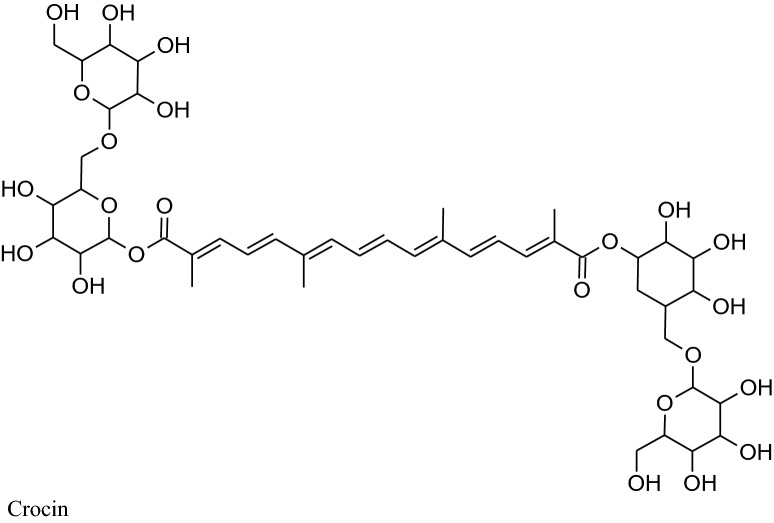
Cymbopogon citrates (Family: Gramineae; Common Name: Lemongrass, Citronella, Squinant)
Extract of shoot and leaves of C. citrates has been widely used for its nutritional, cosmetic and medicinal applications, globally for the high contentof essential oil. Various studies acknowledged the occurrence of its phytoconstituents such as flavonoids, alkaloids, essential oil, phenols, tannins, deoxysugars, saponins, anthraquinones in the leaves and stem of herb [187].
The major constituent of C. citrates is citral which is alone or in combination with other componentshas been used as antimicrobial, antioxidant, chemo-protective and antispasmodic properties.Chitra Devi et al. reported that methanolic extracts of aerial parts (stems & leaves) and roots C. citrates (having citral as the main active constituent) displayed vasorelaxation on the phenylephrine-stimulated contractions in a dose-dependent manner. Citral effects synthesis and release of NO to produce vasorelaxantion by inhibiting the attenuation caused by L-NAME. Moreover, leaves extract may affectsthe synthesis of prostacyclin to induce relaxation. Furthermore, the relaxant effect of the combination of the extract of root, stems and leaves may be due to the blockage of Ca2+ ion channels (endothelium-independent) [188]. Fresh leaf extract of Cymbopogon citrates in combination with other herbal medicines like fruits’extract of Citrus medica and fresh leaf extract of Persea americanacan reduce hypertension in rats induced by sucrose and ethanol. This mixture can be used to protect kidney, liver and vascular endothelium damaged by chronic utilization of sucroseand ethanol [105]. Ray reported that decoction of lemongrass has been produced a major effect on mean arterial pressure on the administration of twice-a-day [189]. From the dairy of Bastos et al. an intravenous bolus inoculation of citronellol (acyclic monoterpenoid) formed an antihypertensive effect in Wistar rats by blocking calcium channels as well asmodifying caffeine-gated and IP3 dependent intracellular stores of Ca2+. Lemongrass oil can capability to suppress the activity of ROS. Interestingly, citral reduces iNOS and NF-kB activity and produce anti-inflammatory actions [125].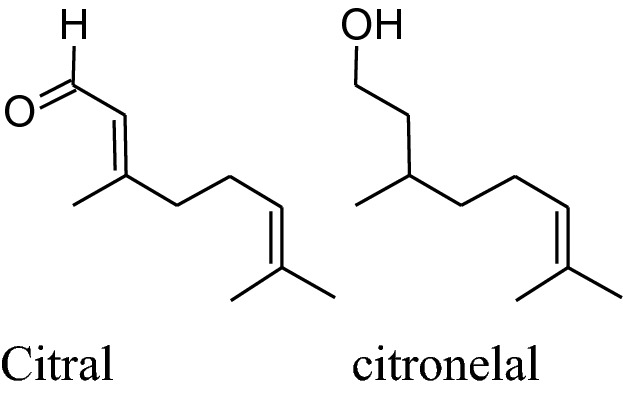
Nigella sativa (Family: Ranunculaceae; Common Name: Seed of Blessing, Black Cumin)
Different aqueous and oily ofSeed of Blessingdisplay a broad range of pharmacological activities and used to treat many ailments and disorders like diabetes, inflammation, hypertension, cardiovascular complications, hepatic disorder, cancer, kidney disorder and arthritis. N. sativa has a decreasing effect on blood pressure [7, 190]. The essential oil of black seed has thymoquinone, as a major active constituent liable to most of the valuable effects of seeds [124, 190, 191]. According to Jaarin et al. Black Cumin’soil has antihypertensive effect by reducing ACE in vivo [192]. Thymol, The other active component of N. sativa, has been reported to decrease blood pressure by endothelial independent pathway (inhibit the influx of calcium ions through calcium channels) in the membrane of endothelium cells followed by vasorelaxation [7].
The black seed oil has four significant, pharmacologically active compounds: thymol (THY), thymoquinone (TQ), thymohydroquinone (THQ), dithymoquinone (DTQ) and α-hederin, essential oils, flavonoids, antioxidants, alkaloids, saponin, proteins, fatty acidsetc.are other bioactive components. Wong reported that regular use of the extract of N. sativa twice daily for eight weeks in mild hypertension results in a significant decrease in blood pressure [193]. Nigella sativa has an inhibitory action on reactive oxygen species can play a possible role in the management of hypertension [194]. Huseini et al. concluded that the oil of N. sativa can considerably decreases both DBP and SBP [195]. Besides, Ahmad et al. explained that TQ cause vasodilation by reducing synthesis and release of metabolites of COX-1 and COX-2 [124]. Black cumin has an inhibiting effect on NF-kB and TNF-a to act as an anti-inflammatory agent [33, 196].
Panax (Panax ginseng, Panaxquinquefolius, Panax japonicas, Panaxnotoginseng; family: Araliaceae; Common Name: Japanese Ginseng, Asian or Korean Ginseng, Chinese ginseng, American Ginseng)
The Panax (“all healing”) has self-confidence traditionally to heal all ill health problems of the human body [197]. Roots of Panaxmainly used in folk medicine for amplevariety of pharmacological and therapeutic purposes for centuries either in solid form or in liquid. Till date, some of 40 ginsenosides have been discovered most active and useful of them are Rb1, Rg1, Rg3, Rh1, Re, and Rd [180]. This medicinal plant has many biological benefits as hypotensive, antioxidation, antidiabetic, vasorelaxation, anti-carcinogenic, anti-allergic, anti-inflammatory, antidiabetic, anticancer, etc.[197, 198]. Amazingly, Kim reported that ginseng can “normalize” hypertensive and hypotensive conditions. It also acts as an anti-carcinogenic and antidiabetic agent [180]. This is well reported in the literature that ginseng has a reducing effect on blood pressure but according to Mucaloet al. it can also increase blood pressure to regularize hypotensive conditions rheostatically probably by alteration of vascular character, adjustingANS, or adapting baroreflex of arteries [199]. Rhee et al. found that ginsenoside of P. ginseng can cause a major decreasing effectin SBP and DBP in patients having gentle hypertension as well as healthy subjects [200]. Ginsenoside Rg3 produces an increasing effect onexpression of eNOS leads to an increase in the production of NO followed by vasorelaxation [201]. Also, ginseng also inhibits adrenal catecholamines emission, which has an additional effect on antihypertensive character [180].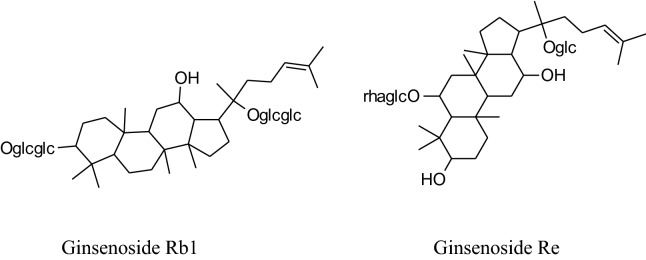
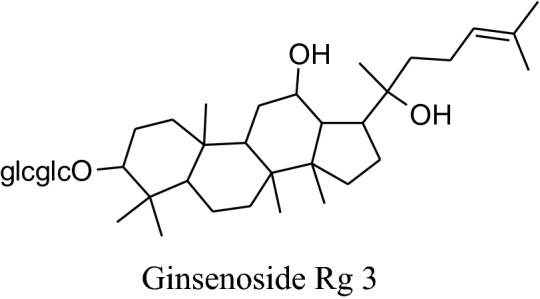
Salviaemiltiorrhizae (Family: Labiatae; Common Name: Danshen, Red/Chinese Sage)
Salviaemiltiorrhizae is oldest and regularly used traditional herbs of China generally utilized for CVDs treatment. Its major phytochemicals are danshensu, tanshinones (tanshinone I &tanshinone II) salvianolic acids (A & B) with other compounds as minor. Mainly root extracts, hold beneficial pharmacological behavior like anti-microbial, antiviral, anti-oxidant, anti-cancer, anti-inflammatory activity and cardiovascular diseases [181, 182]. Danshen’s roots extract diminish pulse rate and systolic blood pressure [202], moderately via enhancing the synthesis of eNOS signaling and amplify NO production to producevasodilation. Tanshinone IIA causes vasodilation without involvement of endothelium cells mechanism [202]. Wang et al. reported that danshen’s metabolite increases stored as well as the influx of Ca2+ intracellularviaa ffecting receptor and voltagedependent calcium channels [203]. Danshen also inhibits ACEs to cause a reduction in blood pressure [149, 204] results in scientific antihypertensive effectsdocumented that danshen also affects other parameters involved in hypertension such as ROS production, oxidation, inflammation and proliferation [205–208].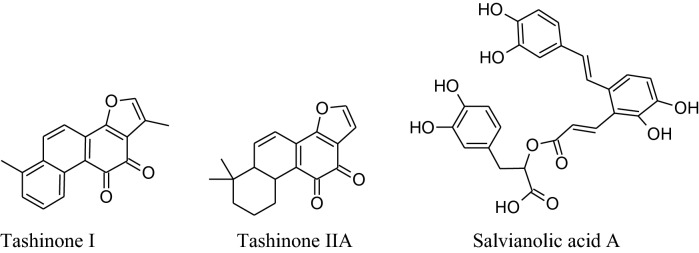
Zingiberofficinale (Family: Zingiberaceae; Common Name: Ginger)
Rhizome of Zingiber officinale, a very commonly used culinary ingredient last for thirteenth century [209]. Akinyemi et al. reported that ginger’s aqueous extract can reduce ACE and lipid peroxidation [210].Suekawa et al. had been found that intravenous and oral dose of (6)-shogoal and (6)-gingerol produced a significant decline in BP [211].
Definitely, [6]-ginger oils are considered to be a fresh antagonist to the angiotensin IItype1 receptor to produce vasodialation [212]. Zingiber officinale (ZO) has a long history of traditional use. It includes numerous components name as beta-carotene, gingerdiol, gingerol, gingerdione, caffeic acid, capsaicin and curcumin. The literature survey confirmed that ginger has multiple biological activities, counting blood pressure-lowering, antioxidant, cholesterol-lowering, anti-inflammatory, antimicrobial, anticancer, antiplatelet aggregation, hypoglycemic, cardiovascular protective,neuroprotective, respiratory protective, antidiabetic, chemopreventive, antiobesity, antiemetic, antinausea [120]. The health profits of ginger are mainly credited to the presence of phenolic compounds like shogaol and gingerols. Ojulariet al., (2014)concluded that Zingiber officinale use can reduce BP [213].Talaeiet al. showed that daily use of powder of ginger for 56 days can lower DBP and SBP in patients having type 2 diabetes [14]. Some studies proved that ginger can be used with antihypertensive drugs for the treatment of hypertension to provide an addition effect [92].
Tribulus terrestris (Family: Zygophyllaceae; Common Name:Gokhru/Gokshura, Puncture Vine)
The annual shrub, Tribulusterrestris has been used as medicine for a long time to treat various types of ailments. Different parts of shrub contain a range of medicinally important chemical constituents which as flavonol, spirostanol and furostanol saponins (tigogenin, neotigogenin, hecogenin, neohecogenin, gitogenin, neogitogenin, chlorogenin, sarsasapogenin, ruscogenin, and diosgenin), flavonoids, alkaloids and glycosides (quercetin 3‑O‑rutinoside, quercetin 3‑O‑glycoside and kaempferol 3‑O‑glycoside) [214]. These active constituents showed immunomodulatory, aphrodisiac, antiurolithic, diuretic, hypolipidemic, antidiabetic, hepatoprotective, analgesic, absorption enhancing, cardiotonic, anti‑inflammatory, antibacterial, antispasmodic, anticancer, anticariogenic, larvicidal and anthelmintic activities [214]. According to Chui et al. and Lu et al. Tribulus terrestris herb used habitually for the treatment of coronary heart disease, cerebral arteriosclerosis, myocardial infarction, thrombosis and hypertension [215–217]. Aqueous and methanolic extracts of gokhru possess an imperative antihypertensive effect directly by membrane hyperpolarization and relaxation of arterial smooth muscle in impulsive hypertensive rats [214]. Adaikanet al. reported that beneficial effects for the treatment of different ailments are credited to its capability to boost up the discharge of nitric oxide (NO) from the nitrergic nerve endings and endothelium [218]. Also, Sharifi, et al. recommended that the antihypertensive effect of gokhru may be associated with its angiotensin converting enzyme (ACE) inhibitor action [217, 219].
RauwolfiaSerpentina (Family: Apocynaceae/Dogbane; Common Name: Devil Pepper, Indian Snakeroot, Serpentine Wood)
RauwolfiaSerpentina is mainly used to treat hypertension. It slows down the activity ofnervous system which in result decreases heart rate and dilates blood vessels. Rauwolfia consists of indolealkaloids as major phytochemical with others including fatty acids, alcohols, sugars and glycosides, steroids, phytosterols, flavonoids, oleoresins and tannins.indolealkaloids are present in all parts of the plant but major source is root’s bark. The identified different indole derivatives are ajmalinine, ajmalidine, ajmalicine, ajmaline, coryanthine, aricine, deserpidine, canescine, lankanescine, isoserine, isoajmaline, isoserpiline, rauhimbine, neoajmaline, raubasine, papaverine, raucaffricine, reserpine, recanescine, reserpiline, rauwolfinine, rescinnamine, thebaine, serpentinine, reserpinine, serpentine, yohimbine, sarpagine and yohimbinine [220]. In all the above indole derivatives, reserpine is the major one and has antihypertensive activity as can reduce both systolic and diastolic blood pressure [220–223]. Reserpine has the irreversible binding capacity to VMAT2 results in biogenic amines depletion e.g. serotonin, nor-adrenaline and dopamine level in VTA (ventral tegmental area), hypothalamus and nucleus accumbens.Molecular mechanism shows that VMAT2 protein irreversibly binds to storage vesicles in cell and causes ‘leak’ their content, e.g.monoamine, into the cytosol which is then tainted by MAO-A enzymes. According to this mechanism renovation of monoamines is independent of age [224].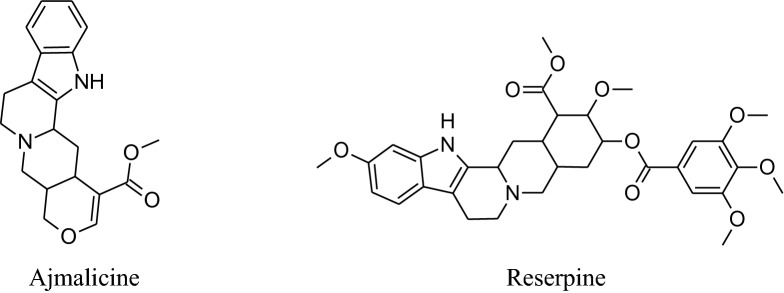
Terminalia arjuna (Family: Combretaceae; Common Name: Arjuna)
Terminalia arjunais aneffective cardioprotective agent (inducedheat shock protein in myocardium) Maulik et al. used fora long time [225]. Based on the experiences of centuries, the decoction of arjuna bark is used in the Indian sub continental areas for the treatment of congestive heart failure, dyslipidemia, anginal pain and hypertension. The different phytoconstituents present are flavonoids, triterpenoids, β-sitosterol, glycosides [226], arjunetosides I–IV, arjunone, arjunine, arjunolone, saponnins, arjunetein, oligomericproanthocyanidins, leteilin, ellagic acid, phytosterols, gallic acid, arjungenin, arjunic acid, tannins, arjunolic acid and minerals [227].
Arjuna has prostaglandin E2-like action through hypotension and coronaryvasodilatation in myocardial ischemia induced by isoprenaline. The bark extract can also decrease oxidative stress induced by isoprenaline [226]. The key advantage of Terminalia arjuna is to improve cardiac muscle activity followed by enhanced pumping function of the heart. It is reported that the inotropic effect of Terminaliaarjunamight be because of saponin glycosides while vascular strengthening and antioxidant action were owing to OPCs and flavonoids. Cardenolides boost the cardiac contraction force by an increase in both sodium and calcium intracellularly [227]. It also has mild diuretic, cardiotonic anti-inflammatory, ROS scavenging, prostaglandin E2, antithrombotic, antiplatelet effects, anti-atherogenic effects and hypolipidaemicaction. It is also used to treat alone and/or with statin to treat coronary artery disease.All these biological properties make Terminalia arjuna aunique medicinal plant currently [228, 229].
Conclusion
Nowadays, it is the most important to search the more effective way to treat hypertension and CVD that is the prime cause of death, globally. Nature indeed inspires or produces all new, small chemical entities introduced as a medicine during the decays. Possibly, this is the reason why most patients commonly visit herbal medicine than allopathic for CVD treatment. In this review, we discussed the most commonly used different plants for the management and treatment of hypertension with their mechanism of action. The pharmacological activities of natural plants and their isolates affect the pathogenesis of hypertension by modulating several parameters like endothelial function, ROS production, pro-inflammatory signaling, platelet activation, opening and closing of different ion channels, ACE inhibition, gene expression etc. Surely, the herbal remedies will be of more attention in the coming time, as they possessing a broad spectrum of achievement, after needful clinical and experimental studies. It is also advisable that patients should be properly educated in relation to the consumption of herbs that are used for a long time e.g. black cumin, coriander, garlic, Chinese sage, ginger and ginseng. As some drugs are also available that can raise blood pressure and can be harmful to patients.
Compliance with Ethical Standards
Conflict of interest
The authors declare no conflict of interest.
Contributor Information
Tarawanti Verma, Email: tara.verma86@gmail.com.
Manish Sinha, Email: manish.pharm2000@gmail.com.
Nitin Bansal, Email: nitindsp@rediffmail.com.
Shyam Raj Yadav, Email: yshyamraj@gmail.com.
Kamal Shah, Email: kamal0603@gmail.com.
Nagendra Singh Chauhan, Email: chauhan.nagendra@gmail.com.
References
- 1.Beevers G, Lip GYH, O'Brien E. BMJ. 2001;322:912–916. doi: 10.1136/bmj.322.7291.912. [DOI] [PMC free article] [PubMed] [Google Scholar]
- 2.Bilanda DC, Dzeufiet PDD, Kouakep L, Aboubakar BFO, Tedong L, Kamtchouing P, Dimo T, Complement BMC. Altern. Med. 2017;17:479–486. doi: 10.1186/s12906-017-1972-0. [DOI] [PMC free article] [PubMed] [Google Scholar]
- 3.Li D, Wang R, Huang J, Cai Q, Yang CS, Wan X, Xie Z. Nutrients. 2019;11:1115–1135. doi: 10.3390/nu11051115. [DOI] [PMC free article] [PubMed] [Google Scholar]
- 4.Ghaffari S, Roshanravan N. Biomed. Pharmacother. 2019;109:21–27. doi: 10.1016/j.biopha.2018.10.031. [DOI] [PubMed] [Google Scholar]
- 5.Kapoor D, Vijayvergiya R, Dhawan V. J. Ethnopharmacol. 2014;155:1029–1045. doi: 10.1016/j.jep.2014.06.056. [DOI] [PubMed] [Google Scholar]
- 6.Laurent S. Pharmacol. Res. 2017 doi: 10.1016/j.phrs.2017.07.026. [DOI] [PubMed] [Google Scholar]
- 7.Vaz NP, Oliveira DRD, Abouelella GA, Abouelella NA, Khater HF. Recent Prog. Med. Plants. 2019;48:219–244. [Google Scholar]
- 8.Huxtable RJ. Physiol. Rev. 1992;72(1):101–163. doi: 10.1152/physrev.1992.72.1.101. [DOI] [PubMed] [Google Scholar]
- 9.Ghazanfer SA. Handbook of Arabian medicinal plants. Boca Raton, EL: CRC Press; 1994. p. 180. [Google Scholar]
- 10.Manvitha K, Bidya B. Int. J. Herb. Med. 2014;1(6):5–7. [Google Scholar]
- 11.G. Bodeker, C-K. Ong, C. Grundy, G. Burford, K. Shein, WHO Centre for Health Development (2005), https://www.who.int/iris/handle/10665/43108. Accessed 4 Jan 2020
- 12.Bartolome AP, Villaseñor IM, Yang W-C. Evid. Based Complement Altern. Med. 2013;2013:1–51. doi: 10.1155/2013/340215. [DOI] [PMC free article] [PubMed] [Google Scholar]
- 13.Potawale SE, Shinde VM, Harle UN, Borade SB, Libi SB, Anandi L, Dhalawat HJ, Deshmukh RS. Pharmacol. Online. 2008;2:185–196. [Google Scholar]
- 14.Talaei B, Mozaffari-Khosravi H, Bahreini S. J. Nutr. Food Secur. 2018;3(2):70–78. [Google Scholar]
- 15.Nelson MT, Quayle JM. Am. J. Physiol. 1995;268:C799–C822. doi: 10.1152/ajpcell.1995.268.4.C799. [DOI] [PubMed] [Google Scholar]
- 16.Onyenekwe PC, Ajani EO, Ameh DA, Gamaniel KS. Cell Biochem. Funct. 1999;17:199–206. doi: 10.1002/(SICI)1099-0844(199909)17:3<199::AID-CBF829>3.0.CO;2-2. [DOI] [PubMed] [Google Scholar]
- 17.Etuk EU. J. Med. Sci. 2006;6(6):894–900. [Google Scholar]
- 18.Abdelrahman Z, Hassan Shayoub MA. Am. J. Pharmatech Res. 2016;6(2):293–310. [Google Scholar]
- 19.Nurfaradilla SA, Saputri FC, Harahap Y. Evid. Based Complement. Altern. Med. 2019;2019:1–7. doi: 10.1155/2019/9694212. [DOI] [PMC free article] [PubMed] [Google Scholar]
- 20.Ajay M, Chai HJ, Mustafa AM, Gilani AH, Mustafa MR. J. Ethnopharmacol. 2007;109:388–393. doi: 10.1016/j.jep.2006.08.005. [DOI] [PubMed] [Google Scholar]
- 21.Abubakar MG, Ukwuani AN, Mande UU. Sky J. Biochem. Res. 2015;4(3):013–015. [Google Scholar]
- 22.Alzweiri M, Sarhan AA, Mansi K, Hudaib M, Aburjai T. J. Ethnopharmacol. 2011;137:27–35. doi: 10.1016/j.jep.2011.02.007. [DOI] [PubMed] [Google Scholar]
- 23.Lans C. J. Ethnobiol. Ethnomed. 2006;3:13. doi: 10.1186/1746-4269-3-13. [DOI] [PMC free article] [PubMed] [Google Scholar]
- 24.Hopkins AL, Lamm MG, Funk J, Ritenbaugh C. Fitoterapia. 2013;85:84–94. doi: 10.1016/j.fitote.2013.01.003. [DOI] [PMC free article] [PubMed] [Google Scholar]
- 25.Mojiminiyi FBO, Dikko M, Muhammad BY, Ojobor PD, Ajagbonna OP, Okolo RU, Igbokwe UV, Mojiminiyi UE, Fagbemi MA, Bello SO, Anga TJ. Fitoterapia. 2007;78:292–297. doi: 10.1016/j.fitote.2007.02.011. [DOI] [PubMed] [Google Scholar]
- 26.Herrera-Arellano A, Flores-Romero S, Chávez-Soto MA, Tortoriello J. Phytomedicine. 2004;11:375–382. doi: 10.1016/j.phymed.2004.04.001. [DOI] [PubMed] [Google Scholar]
- 27.Herrera-Arellano A, Miranda-Sanchez J, Avila-Castro P, Herrera-Alvarez S, Jimenez-Ferrer JE, Zamilpa A, Roman-Ramos R, Ponce-Monter H, Tortoriello J. Planta Med. 2007;73:6–12. doi: 10.1055/s-2006-957065. [DOI] [PubMed] [Google Scholar]
- 28.McKay DL, Chen CYO, Saltzman E, Blumberg JB. J. Nutr. 2010;140:298–303. doi: 10.3945/jn.109.115097. [DOI] [PubMed] [Google Scholar]
- 29.Gurrola-Diaz CM, Garcia-Lopez PM, Sanchez-Enriquez S, Troyo-Sanroman R, Andrade-Gonzalez I, Gomez-Leyva JF. Phytomedicine. 2010;17:500–505. doi: 10.1016/j.phymed.2009.10.014. [DOI] [PubMed] [Google Scholar]
- 30.Meresa A, Fekadu N, Degu S, Tadele A, Geleta B. J. Clin. Exp. Pharmacol. 2017;7(2):2–16. doi: 10.4172/2161-1459.1000228. [DOI] [PMC free article] [PubMed] [Google Scholar]
- 31.Chan W-JJ, McLachlan AJ, Luca EJ, Harnett JE. AGRIS. 2019 doi: 10.1016/j.hermed.2019.100292. [DOI] [Google Scholar]
- 32.Agrawal M, Nandini D, Sharma V, Chauhan NS. Int. J. Pharm. Sci. 2010;1(5):1–21. [Google Scholar]
- 33.Disi SSA, Anwar MA, Eid AH. Front. Pharmacol. 2016;6:323–247. doi: 10.3389/fphar.2015.00323. [DOI] [PMC free article] [PubMed] [Google Scholar]
- 34.Ku DD, Abdel-Razek TT, Dai J, Kim-Park S, Fallon MB, Abrams GA. Clin. Exp. Pharmacol. Physiol. 2002;29:84–91. doi: 10.1046/j.1440-1681.2002.03596. [DOI] [PubMed] [Google Scholar]
- 35.Mousa AS, Mousa SA. Nutr. Res. 2007;27:119–123. doi: 10.1016/j.nutres.2007.01.001. [DOI] [Google Scholar]
- 36.Benavides GA, Squadrito GL, Mills RW, Patel HD, Isbell TS, Patel RP. Proc. Natl. Acad. Sci. USA. 2007;104:17977–17982. doi: 10.1073/pnas.0705710104. [DOI] [PMC free article] [PubMed] [Google Scholar]
- 37.Sendl A, Elbl G, Steinke B, Redl K, Breu W, Wagner H. Planta Med. 1992;58:1–7. doi: 10.1055/s-2006-961378. [DOI] [PubMed] [Google Scholar]
- 38.Banerjee SK, Maulik M, Mancahanda SC, Dinda AK, Gupta SK, Maulik SK. Life Sci. 2002;70:1509–1518. doi: 10.1016/S0024-3205(01)01514-4. [DOI] [PubMed] [Google Scholar]
- 39.Frishman WH, Beravol P, Carosella C. Dis. Mon. 2009;55:121–192. doi: 10.1016/j.disamonth.2008.12.002. [DOI] [PubMed] [Google Scholar]
- 40.Castro AG, Lorenzo A, González MC. Mol. Nutr. Food Res. 2010;54:781–787. doi: 10.1002/mnfr.200900108. [DOI] [PubMed] [Google Scholar]
- 41.Pan LL, Liu XH, Gong QH, Yang HB, Zhu YZ. Antioxid. Redox Signal. 2012;17:106–118. doi: 10.1089/ars.2011.4349. [DOI] [PMC free article] [PubMed] [Google Scholar]
- 42.Qidwai W, Ashfaq T. Evid. Based Complement. Altern. Med. 2013;201:125649. doi: 10.1155/2013/125649. [DOI] [PMC free article] [PubMed] [Google Scholar]
- 43.Kunwar RM, Shrestha KP, Bussmann RW. J. Ethnobiol. Ethnomed. 2010;6:35. doi: 10.1186/1746-4269-6-35. [DOI] [PMC free article] [PubMed] [Google Scholar]
- 44.Zhang CY, Tan BK. Clin. Exp. Pharmacol. Physiol. 1996;23:675–678. doi: 10.1111/j.1440-1681.1996.tb01756. [DOI] [PubMed] [Google Scholar]
- 45.Karaki H, Nakagawa H, Urakawa N. Br. J. Pharmacol. 1984;81:393–400. doi: 10.1111/j.1476-5381.1984.tb10091.x. [DOI] [PMC free article] [PubMed] [Google Scholar]
- 46.Awang K, Abdullah NH, Hadi AHA, Fong YS. J. Biomed. Biotechnol. 2012;2012:876458. doi: 10.1155/2012/876458. [DOI] [PMC free article] [PubMed] [Google Scholar]
- 47.Tan BK, Zhang C, Kuroyangi M. Pharmacol. Res. 1998;38:413–417. doi: 10.1006/phrs.1998.0373. [DOI] [PubMed] [Google Scholar]
- 48.Nyeem MAB, Mannan MA, Nuruzzaman M, Kamrujjaman KM, Das SK. J. Med. Plants Stud. 2017;5(2):318–324. [Google Scholar]
- 49.Jayakumar T, Hsieh C-Y, Lee J-J, Sheu J-R. Evid. Based Complement. Alternat. Med. 2013;2013:1–16. doi: 10.1155/2013/846740. [DOI] [PMC free article] [PubMed] [Google Scholar]
- 50.Salehi B, Venditti A, Frezza C, Yücetepe A, Altuntas U, Uluata S, Butnariu M, Sarac I, Shaheen S, Petropoulos SA, Matthews KR, Kılıç CS, Atanassova M, Adetunji CO, Ademiluyi AO, Özçelik B, Fokou PVT, Martins N, Cho WC. J. Sharifi-Rad. Appl. Sci. 2019;9:3547–3586. doi: 10.3390/app9173547. [DOI] [Google Scholar]
- 51.Tabassum N, Ahmad F. Pharmacog. Rev. 2011;5(9):30–41. doi: 10.4103/0973-7847.79097. [DOI] [PMC free article] [PubMed] [Google Scholar]
- 52.Khalil A, Nawaz H, Ghania JB, Rehman R, Nadeem F. Int. J. Chem. Biochem. Sci. 2015;8:40–48. [Google Scholar]
- 53.Moghadam MH, Imenshahidi M, Mohajeri SA. J. Med. Food. 2013;16:558–563. doi: 10.1089/jmf.2012.2664. [DOI] [PMC free article] [PubMed] [Google Scholar]
- 54.Tsi D, Tan BK. Phytother Res. 1997;11:576–582. [Google Scholar]
- 55.Ko FN, Huang TF, Teng CM. Biochim. Biophys. Acta. 1991;1115:69–74. doi: 10.1016/0304-4165(91)90013-7. [DOI] [PubMed] [Google Scholar]
- 56.Houston MC. Prog. Cardiovasc. Dis. 2005;47:396–449. doi: 10.1016/j.pcad.2005.01.004. [DOI] [PubMed] [Google Scholar]
- 57.Fazal SS, Singla RK. Indo Global J. Pharm. Sci. 2012;2(1):36–42. [Google Scholar]
- 58.Popovic M, Kaurinovic B, Trivic S, Mimica-Dukic N, Bursac M. Phytother. Res. 2006;20:531–537. doi: 10.1002/ptr.1871. [DOI] [PubMed] [Google Scholar]
- 59.Thiyagarajan R, Boobalan R. Int. J. Pharm. Biol. Arch. 2014;5(4):82–88. [Google Scholar]
- 60.Kviecinski MR, Felipe KB, Correia JFG, Ferreira EA, Rossi MH, Gatti FM, Filho DW, Pedrosa RC. J. Med. Sci. 2011;6:5651–5662. [Google Scholar]
- 61.Dimo T, Rakotonirina SV, Tan PV, Azay J, Dongo E, Cros G. J. Ethnopharmacol. 2002;83(3):183–191. doi: 10.1016/s0378-8741(02)00162-9. [DOI] [PubMed] [Google Scholar]
- 62.Dimo T, Nguelefack TB, Tan PV, Yewah MP, Dongo E, Rakotonirina SV, Kamanyi A, Bopelet M. Phytother. Res. 2003;17:1135–1139. doi: 10.1002/ptr.1132. [DOI] [PubMed] [Google Scholar]
- 63.Hsin-Ling Y, Ssu-Ching C, Nai-Wen C, Jia-Ming C, Mei-Ling L, Pei-Chuan T, Han-Hsuan F, Wei-Wan K, Hsiao-Chi C, Hsuan-Hui W, You-Cheng H. Food Chem. Toxicol. 2006;44:1513–1521. [Google Scholar]
- 64.Yu-Chuan L, Meng-Ting Y, Chuan-Ju L, Cicero LTC, Wen-Chin Y. Sci. Rep. 2016 doi: 10.1038/24285. [DOI] [Google Scholar]
- 65.Gulfsha P, Ali M. IOSR J. Pharm. Biol. Sci. 2019;14(4):73–85. [Google Scholar]
- 66.Dimo T, Azay J, Tan PV, Pellecuer J, Cros G, Bopelet M, Serrano M. J. Ethnopharmacol. 2001;76(3):215–221. doi: 10.1016/s0378-8741(01)00229-x. [DOI] [PubMed] [Google Scholar]
- 67.Nguelefack TB, Dimo T, Mbuyo EP, Tan PV, Rakotonirina SV, Kamanyi A. Phytother. Res. 2005;19:207–210. doi: 10.1002/ptr.1646. [DOI] [PubMed] [Google Scholar]
- 68.Deka A, Vita JA. Phytother. Res. 2011;64:136–145. doi: 10.1016/j.phrs.2011.03.009. [DOI] [PMC free article] [PubMed] [Google Scholar]
- 69.Oyama J, Maeda T, Kouzuma K, Ochiai R, Tokimitsu I, Higuchi Y. Circ. J. 2010;74:578–588. doi: 10.1253/circj.CJ-09-0692. [DOI] [PubMed] [Google Scholar]
- 70.Hong MH, Kim MH, Chang HJ, Kim NH, Shin BA, Ahn BW. Life Sci. 2007;80:1957–1965. doi: 10.1016/j.lfs.2007.02.024. [DOI] [PubMed] [Google Scholar]
- 71.Peng X, Zhou R, Wang B, Yu X, Yang X, Liu K. Sci. Rep. 2014;4:6251. doi: 10.1038/srep06251. [DOI] [PMC free article] [PubMed] [Google Scholar]
- 72.Stepien M, Kujawska-Luczak M, Szulinska M, Kregielska-Narozna M, Skrypnik D, Suliburska J, Skrypnik K, Regula J, Bogdanski P. J. Physiol. Pharmacol. 2018;69(2):1–8. doi: 10.26402/jpp.2018.2.13. [DOI] [PubMed] [Google Scholar]
- 73.Mineharu Y, Koizumi A, Wada Y, Iso H, Watanabe Y, Date C, Kondo T. J. Epidemiol. Community Health. 2011;65(3):230–240. doi: 10.1136/jech.2009.097311. [DOI] [PubMed] [Google Scholar]
- 74.San Cheang W, Ngai CY, Tam YY, Tian XY, Wong WT, Zhang Y, Leung FP. Sci. Rep. 2015 doi: 10.1038/srep10340. [DOI] [PMC free article] [PubMed] [Google Scholar]
- 75.Zhang L, Ho C-T, Zhou J, Santos JS, Armstrong L, Granato D. Compr. Rev. Food Sci. Food Saf. 2019;18:1474–1495. doi: 10.1111/1541-4337.12479. [DOI] [PubMed] [Google Scholar]
- 76.Bagade A, Tumbigeremutt V, Pallavi G. J. Restor. Med. 2017;6:37. doi: 10.14200/jrm.2017.6.0100. [DOI] [Google Scholar]
- 77.Vazquez-Prieto MA, Rodriguez Lanzi C, Lembo C, Galmarini CR, Miatello RM. J. Nutr. Metab. 2011;2011:475216. doi: 10.1155/2011/475216. [DOI] [PMC free article] [PubMed] [Google Scholar]
- 78.Morihara N, Hayama M, Fujii H. Plant Foods Hum. Nutr. 2011;66:17–21. doi: 10.1007/s11130-011-0216-6. [DOI] [PubMed] [Google Scholar]
- 79.Drobiova H, Thomson M, Al-Qattan K, Peltonen-Shalaby R, Al-Amin Z, Ali M. Evid. Based Complement. Altern. Med. 2011;2011:703049. doi: 10.1093/ecam/nep011. [DOI] [PMC free article] [PubMed] [Google Scholar]
- 80.Joshi CN, Martin DN, Shaver P, Madamanchi C, Muller-Borer BJ, Tulis DA. Front. Physiol. 2012;3:220. doi: 10.3389/fphys.2012.00220. [DOI] [PMC free article] [PubMed] [Google Scholar]
- 81.Padiya R, Chowdhury D, Borkar R, Srinivas R, PalBhadra M, Banerjee SK. PLoS ONE. 2014;9:e94228. doi: 10.1371/journal.pone.0094228. [DOI] [PMC free article] [PubMed] [Google Scholar]
- 82.Das S, Periyasamy R, Pandey KN. Physiol. Genomics. 2012;44:430–442. doi: 10.1152/physiolgenomics.00147.2011. [DOI] [PMC free article] [PubMed] [Google Scholar]
- 83.Duffy SJ, Keaney JF, Holbrook M, Gokce N, Swerdloff PL, Frei B. Circulation. 2001;104:151–156. doi: 10.1161/01.CIR.104.2.151. [DOI] [PubMed] [Google Scholar]
- 84.Hodgson JM, Puddey IB, Burke V, Watts GF, Beilin LJ. Clin. Sci. 2002;102:195–201. doi: 10.1042/cs1020195. [DOI] [PubMed] [Google Scholar]
- 85.Nakagawa T, Yokozawa T. Food Chem. Toxicol. 2002;40:1745–1750. doi: 10.1016/S0278-6915(02)00169-2. [DOI] [PubMed] [Google Scholar]
- 86.Ludwig A, Lorenz M, Grimbo N, Steinle F, Meiners S, Bartsch C. Biochem. Biophys. Res. Commun. 2004;316:659–665. doi: 10.1016/j.bbrc.2004.02.099. [DOI] [PubMed] [Google Scholar]
- 87.Ribaldo PD, Souza DS, Biswas SK, Block K, Lopes deFaria JM, Lopes deFaria JB. J. Nutr. 2009;139:96–100. doi: 10.3945/jn.108.095018. [DOI] [PMC free article] [PubMed] [Google Scholar]
- 88.Faria AM, Papadimitriou A, Silva KC, Lopes deFaria JM, Lopes deFaria JB. Diabetes. 2012;61:1838–1847. doi: 10.2337/db11-1241. [DOI] [PMC free article] [PubMed] [Google Scholar]
- 89.Bogdanski P, Suliburska J, Szulinska M, Stepien M, Pupek-Musialik D, Jablecka A. Nutr. Res. 2012;32:421–427. doi: 10.1016/j.nutres.2012.05.007. [DOI] [PubMed] [Google Scholar]
- 90.Thomson M, Al-Qattan K, Mansour MH, Ali M. Evid. Based Complement. Altern. Med. 2012;2012:409047. doi: 10.1155/2012/409047. [DOI] [PMC free article] [PubMed] [Google Scholar]
- 91.Newsome BJ, Petriello MC, Han SG, Murphy MO, Eske KE, Sunkara M. J. Nutr. Biochem. 2014;25:126–135. doi: 10.1016/j.jnutbio.2013.10.003. [DOI] [PMC free article] [PubMed] [Google Scholar]
- 92.Shaban MI, El-Gahsh NFA, El-Said A, El-Sol H. IOSR J. Nurs. Health Sci. 2017;6(5):79–86. [Google Scholar]
- 93.Wang Y, Huang Y, Lam KS, Li Y, Wong WT, Ye H. Cardiovasc. Res. 2009;82:484–492. doi: 10.1093/cvr/cvp078. [DOI] [PubMed] [Google Scholar]
- 94.Affuso F, Mercurio V, Fazio V, Fazio S. World J. Cardiol. 2010;2:71–77. doi: 10.4330/wjc.v2.i4.71. [DOI] [PMC free article] [PubMed] [Google Scholar]
- 95.Zhang P, Song SJ, Liu WL, Li LL, Zhao WL, Zhang Y. Zhongguo Yingyong Shenglixuezazhi. 2011;27:420–425. [PubMed] [Google Scholar]
- 96.Wan X, Chen X, Liu L, Zhao Y, Huang WJ, Zhang Q. PLoS ONE. 2013;8:e59794. doi: 10.1371/journal.pone.0059794. [DOI] [PMC free article] [PubMed] [Google Scholar]
- 97.Sreelatha S, Padma PR, Umadevi M. Food Chem. Toxicol. 2009;47:702–708. doi: 10.1016/j.fct.2008.12.022. [DOI] [PubMed] [Google Scholar]
- 98.Wu TT, Tsai CW, Yao HT, Lii CK, Chen HW, Wu YL. J. Sci. Food Agric. 2010;90:1846–1854. doi: 10.1002/jsfa.4023. [DOI] [PubMed] [Google Scholar]
- 99.Patel DK, Desai SN, Gandhi HP, Devkar RV, Ramachandran AV. Food Chem. Toxicol. 2012;50:3120–3125. doi: 10.1016/j.fct.2012.06.033. [DOI] [PubMed] [Google Scholar]
- 100.Koçyildiz ZC, Birman H, Olgaç V, Akgün-Dar K, Melikoˇglu G, Meriçli AH. Phytother. Res. 2006;20:66–70. doi: 10.1002/ptr.1808. [DOI] [PubMed] [Google Scholar]
- 101.Brixius K, Willms S, Napp A, Tossios P, Ladage D, Bloch W. Cardiovasc. Drugs Ther. 2006;20:177–184. doi: 10.1007/s10557-006-8723-7. [DOI] [PubMed] [Google Scholar]
- 102.Cheng N, Wang Y, Gao H, Yuan J, Feng F, Cao W. Food Chem. Toxicol. 2013;59:709–714. doi: 10.1016/j.fct.2013.07.015. [DOI] [PubMed] [Google Scholar]
- 103.Topal G, Koç E, Karaca C, Altuˇg T, Ergin B, Demirci C. Phytother. Res. 2013;27:330–337. doi: 10.1002/ptr.4726. [DOI] [PubMed] [Google Scholar]
- 104.Premkumar K, Abraham SK, Santhiya ST, Ramesh A. Phytother. Res. 2003;17:614–617. doi: 10.1002/ptr.1209. [DOI] [PubMed] [Google Scholar]
- 105.Dzeufiet PDD, Mogueo A, Bilanda DC, Aboubakar B-FO, Tédong L, Dimo T, Kamtchouing P. BMC Complement. Altern. Med. 2014;14:507–519. doi: 10.1186/1472-6882-14-507. [DOI] [PMC free article] [PubMed] [Google Scholar]
- 106.El-Beshbishy HA, Hassan MH, Aly MA, Doghish SA, Alghaithy AA. Ecotoxicol. Environ. Saf. 2012;83:47–54. doi: 10.1016/j.ecoenv.2012.06.003. [DOI] [PubMed] [Google Scholar]
- 107.Bharti S, Golechha M, Kumari S, Siddiqui KM, Arya DS. Eur. J. Nutr. 2012;51:719–727. doi: 10.1007/s00394-011-0251-y. [DOI] [PubMed] [Google Scholar]
- 108.Ali BH, AlWabel N, Blunden G. Phytother. Res. 2005;19:369–375. doi: 10.1002/ptr.1628. [DOI] [PubMed] [Google Scholar]
- 109.Ajiboye TO, Salawu NA, Yakubu MT, Oladiji AT, Akanji MA, Okogun JI. Drug Chem. Toxicol. 2011;34:109–115. doi: 10.3109/01480545.2010.536767. [DOI] [PubMed] [Google Scholar]
- 110.Frank T, Netzel G, Kammerer DR, Carle R, Kler A, Kriesl E. J. Sci. Food Agric. 2012;92:2207–2218. doi: 10.1002/jsfa.5615. [DOI] [PubMed] [Google Scholar]
- 111.Alarcón-Alonso A, Zamilpa FA, Aguilar M, Herrera-Ruiz J, Tortoriello E-F. J. Ethnopharmacol. 2012;139:751–756. doi: 10.1016/j.jep.2011.12.005. [DOI] [PubMed] [Google Scholar]
- 112.Zhang W, Chen G, Deng CQ. J. Pharm. Pharmacol. 2012;64:139–145. doi: 10.1111/j.2042-7158.2011.01379.x. [DOI] [PubMed] [Google Scholar]
- 113.Tao LL, Lei Y. Zhong Xi Yi Jie He Xue Bao. 2012;10:76–84. doi: 10.3736/jcim20120112. [DOI] [PubMed] [Google Scholar]
- 114.Doh KC, Lim SW, Piao SG, Jin L, Heo SB, Zheng YF. Am. J. Nephrol. 2013;37:421–433. doi: 10.1159/000349921. [DOI] [PubMed] [Google Scholar]
- 115.Ma L, Liu H, Xie Z, Yang S, Xu W, Hou J. PLoS ONE. 2014;9:e103628. doi: 10.1371/journal.pone.0103628. [DOI] [PMC free article] [PubMed] [Google Scholar]
- 116.Wang Y, Liu Y, Zhang XY, Ouyang DY, Liu KP. Int. Immunopharmacol. 2014;23:77–84. doi: 10.1016/j.intimp.2014.07.028. [DOI] [PubMed] [Google Scholar]
- 117.Qian Q, Qian S, Fan P, Huo D, Wang S. Phytother. Res. 2012;26:60–66. doi: 10.1002/ptr.3513. [DOI] [PubMed] [Google Scholar]
- 118.Cho YH, Ku CR, Hong ZY, Heo JH, Kim EH, Choi DH. Evid. Based Complement. Altern. Med. 2013;2013:623639. doi: 10.1155/2013/623639. [DOI] [PMC free article] [PubMed] [Google Scholar]
- 119.Shin SG, Kim JY, Chung HY, Jeong JC. J. Agric. Food Chem. 2005;53:7617–7622. doi: 10.1021/jf051014x. [DOI] [PubMed] [Google Scholar]
- 120.Mao Q-Q, Xu X-Y, Cao S-Y, Gan R-Y, Corke H, Beta T, Li H-B. Foods. 2019;8:185–206. doi: 10.3390/foods8060185. [DOI] [PMC free article] [PubMed] [Google Scholar]
- 121.Xagorari A, Papapetropoulos A, Mauromatis A, Economou M, Fotsis T, Roussos C. J. Pharmacol. Exp. Ther. 2001;296:181–187. [PubMed] [Google Scholar]
- 122.Chiang YM, Lo CP, Chen YP, Wang SY, Yang NS, Kuo YH. Br. J. Pharmacol. 2005;146:352–363. doi: 10.1038/sj.bjp.0706343. [DOI] [PMC free article] [PubMed] [Google Scholar]
- 123.Nguelefack-Mbuyo PE, Nguelefack TB, Dongmo AB, Afkir S, Azebaze AG, Dimo T, Legssyer A, Kamanyi A, Ziyyat A. J. Ethnopharmacol. 2008;117:446–450. doi: 10.1016/j.jep.2008.02.028. [DOI] [PubMed] [Google Scholar]
- 124.Ahmad A, Husain A, Mujeeb M, Khan SA, Najmi AK, Siddique NA, Damanhouri ZA, Anwar F. Asian Pac. J. Trop. Biomed. 2013;3(5):337–352. doi: 10.1016/S2221-1691(13)60075-1. [DOI] [PMC free article] [PubMed] [Google Scholar]
- 125.Bastos JF, Moreira IJ, Ribeiro TP, Medeiros IA, Antoniolli AR, De Sousa DP. Basic Clin. Pharmacol. Toxicol. 2010;106:331–337. doi: 10.1111/j.1742-7843.2009.00492. [DOI] [PubMed] [Google Scholar]
- 126.Zaoui A, Cherrah Y, Lacaille-Dubois MA, Settaf A, Amarouch H, Hassar M. Therapie. 2000;55:379–382. [PubMed] [Google Scholar]
- 127.Hernandez-Abreu O, Castillo-Espana P, Leon R, Ibarra Barajas M, Villalobos-Molina R, González-Christen J. Biochem. Pharmacol. 2009;78:54–61. doi: 10.1016/j.bcp.2009.03.016. [DOI] [PubMed] [Google Scholar]
- 128.Bankar GR, Nayak PG, Bansal P, Paul P, Pai KSR, Singla RK. J. Ethnopharmacol. 2011;134:50–54. doi: 10.1016/j.jep.2010.11.047. [DOI] [PubMed] [Google Scholar]
- 129.Maghrani M, Zeggwagh N-A, Michel J-B, Eddouks M. J. Ethnopharmacol. 2005;100:193–197. doi: 10.1016/j.jep.2005.02.024. [DOI] [PubMed] [Google Scholar]
- 130.Vergara-Galicia J, Ortiz-Andrade R, Rivera-Leyva J, Castillo-España P, Villalobos-Molina R, Ibarra-Barajas M. Fitoterapia. 2010;81:350–357. doi: 10.1016/j.fitote.2009.10.009. [DOI] [PubMed] [Google Scholar]
- 131.Gilani AH, Khan A-U, Jabeen Q, Subhan F, Ghafar R. J. Ethnopharmacol. 2005;100:347–352. doi: 10.1016/j.jep.2005.05.010. [DOI] [PubMed] [Google Scholar]
- 132.Somova LI, Shode FO, Ramnanan P, Nadar A. J. Ethnopharmacol. 2003;84:299–305. doi: 10.1016/s0378-8741(02)00332-x. [DOI] [PubMed] [Google Scholar]
- 133.Yeh C-T, Huang W-H, Yen G-C. J. Nutr. Biochem. 2009;20:866–875. doi: 10.1016/j.jnutbio.2008.07.015. [DOI] [PubMed] [Google Scholar]
- 134.Kwan C-Y, Chen C-X, Deyama T, Nishibe S. Vasc. Pharmacol. 2003;40:229–235. doi: 10.1016/j.vph.2003.09.001. [DOI] [PubMed] [Google Scholar]
- 135.Lin S-Y, Wang C-C, Lu Y-L, Wu W-C, Hou W-C. Food Chem. Toxicol. 2008;46:2485–2492. doi: 10.1016/j.fct.2008.04.007. [DOI] [PubMed] [Google Scholar]
- 136.Gasparotto A, Jr, Gasparotto FM, Lourenço ELB, Crestani S, Stefanello MEA, Salvador MJ. J. Ethnopharmacol. 2011;134:363–372. doi: 10.1016/j.jep.2010.12.026. [DOI] [PubMed] [Google Scholar]
- 137.Kang DG, Hur TY, Lee GM, Oh H, Kwon TO, Sohn EJ, Lee HS. Life Sci. 2002;70:2599–2609. doi: 10.1016/s0024-3205(02)01547-3. [DOI] [PubMed] [Google Scholar]
- 138.Vergara-Galicia J, Ortiz-Andrade R, Castillo-Espana P, Ibarra Barajas M, Gallardo-Ortiz I, Villalobos-Molina R. Vasc. Pharmacol. 2008;49:26–31. doi: 10.1016/j.vph.2008.04.002. [DOI] [PubMed] [Google Scholar]
- 139.Magos GA, Mateos JC, Páez E, Fernández G, Lobato C, Márquez C. J. Ethnopharmacol. 2008;117:58–68. doi: 10.1016/j.jep.2008.01.015. [DOI] [PubMed] [Google Scholar]
- 140.Aguirre-Crespo F, Vergara-Galicia J, Villalobos-Molina R, López-Guerrero J, Navarrete-Vázquez G, Estrada-Soto S. Life Sci. 2006;79:1062–1068. doi: 10.1016/j.lfs.2006.03.006. [DOI] [PubMed] [Google Scholar]
- 141.Gilani AH, Jabeen Q, Khan A-U, Shah AJ. J. Ethnopharmacol. 2008;115:463–472. doi: 10.1016/j.jep.2007.10.015. [DOI] [PubMed] [Google Scholar]
- 142.Hellstrom JK, Shikov AN, Makarova MN, Pihlanto AM, Pozharitskaya ON. J. Funct. Foods. 2010;2:163–169. [Google Scholar]
- 143.Ojewole JAO, Adewole SO, Olayiwola G. Cardiovasc. J. S. Afr. 2006;17(5):227–232. [PubMed] [Google Scholar]
- 144.Kang DG, Lee YS, Kim HJ, Lee YM, Lee HS. J. Ethnopharmacol. 2003;89:151–154. doi: 10.1016/s0378-8741(03)00274-5. [DOI] [PubMed] [Google Scholar]
- 145.Lahlou S, Tangi KC, Lyoussi B, Morel N. J. Ethnopharmacol. 2008;120:98–102. doi: 10.1016/j.jep.2008.07.041. [DOI] [PubMed] [Google Scholar]
- 146.Consolini AE, Ragone MI, Migliori GN, Conforti P, Volonte MG. J. Ethnopharmacol. 2006;106:90–96. doi: 10.1016/j.jep.2005.12.006. [DOI] [PubMed] [Google Scholar]
- 147.Consolini AE, Sarubbio MG. J. Ethnopharmacol. 2002;81:57–63. doi: 10.1016/s0378-8741(02)00039-9. [DOI] [PubMed] [Google Scholar]
- 148.Xie Y-W, Xu H-X, Dong H, Fiscus RR. J. Ethnopharmacol. 2006;109(1):128–339. doi: 10.1016/j.jep.2006.07.015. [DOI] [PubMed] [Google Scholar]
- 149.Yang L, Zou X, Liang Q. Exp. Mol. Med. 2007;39:73. doi: 10.1038/emm.2007.8. [DOI] [PubMed] [Google Scholar]
- 150.Xue B, Li J, Chai Q, Liu Z, Chen L. Phytomedicine. 2008;15:759–762. doi: 10.1016/j.phymed.2007.11.030. [DOI] [PubMed] [Google Scholar]
- 151.Perez YY, Jimenez-Ferrer E, Alonso D, Botello-Amaro CA, Zamilpa A. J. Ethnopharmacol. 2010;128:611–614. doi: 10.1016/j.jep.2010.01.059. [DOI] [PubMed] [Google Scholar]
- 152.De Souza P, GasparottoJr A, Crestani S, Stefanello MEA, Marques MCA, Jed SS. Phytomedicine. 2011;18(10):819–825. doi: 10.1016/j.phymed.2011.02.005. [DOI] [PubMed] [Google Scholar]
- 153.Soncini R, Santiago MB, Orlandi L, Moraes GOI, Peloso ALM, dos Santos MH. J. Ethnopharmacol. 2011;133:353–357. doi: 10.1016/j.jep.2010.10.001. [DOI] [PubMed] [Google Scholar]
- 154.Gilani AH, Jabeen Q, Ghayur MN, Janbaz KH, Akhtar MS. J. Ethnopharmacol. 2005;98:127–135. doi: 10.1016/j.jep.2005.01.017. [DOI] [PubMed] [Google Scholar]
- 155.Lucas-Filho MD, Silva GC, Cortes SF, Mares-Guia TR, PerpétuaFerraz V, Serra CP. Phytomedicine. 2010;17:383–387. doi: 10.1016/j.phymed.2009.09.008. [DOI] [PubMed] [Google Scholar]
- 156.Wang G-J, Tseng H-W, Chou C-J, Tsai T-H, Chen C-T, Lu M. Life Sci. 2003;73:2769–2783. doi: 10.1016/s0024-3205(03)00669-6. [DOI] [PubMed] [Google Scholar]
- 157.Veeramani C, Aristatile B, Pushpavalli G, Pugalendi KV. Saudi J. Biol. Sci. 2011;18:99–105. doi: 10.1016/j.sjbs.2010.05.002. [DOI] [PMC free article] [PubMed] [Google Scholar]
- 158.Nguelefack TB, Mekhfi H, Dongmo AB, Dimo T, Watcho P, Zoheir J. J. Ethnopharmacol. 2009;124:592–599. doi: 10.1016/j.jep.2009.04.057. [DOI] [PubMed] [Google Scholar]
- 159.Tibiriça E, Almeida A, Caillleaux S, Pimenta D, Kaplan MA, Lessa MA. J. Ethnopharmacol. 2007;111:50–55. doi: 10.1016/j.jep.2006.10.030. [DOI] [PubMed] [Google Scholar]
- 160.Saleem R, Ahmed M, Ahmed SI, Azeem M, Khan RA, Rasool N. Phytother. Res. 2005;19:881–884. doi: 10.1002/ptr.1732. [DOI] [PubMed] [Google Scholar]
- 161.Abreu IC, Marinho AS, Paes AM, Freire SM, Olea RS, Borges MO. Fitoterapia. 2003;74:650–657. doi: 10.1016/j.fitote.2003.07.002. [DOI] [PubMed] [Google Scholar]
- 162.Alfieri A, Maione F, Bisio A, Romussi G, Mascolo N, Cicala C. Phytother. Res. 2007;21:690–692. doi: 10.1002/ptr.2128. [DOI] [PubMed] [Google Scholar]
- 163.Jiarong L, Feixia D, Ziyou Y, Wenjie Z, Jinping F, Guoli S. J. Ethnopharmacol. 2015;23(161):69–81. doi: 10.1016/j.jep.2014.09.049. [DOI] [Google Scholar]
- 164.Singh P, Mishra A, Singh P, Goswami S, Singh A, Tiwari KD. Indian J. Res. Pharm. Biotech. 2015;3(5):358–366. [Google Scholar]
- 165.Jabeen Q, Bashir S, Lyoussi B, Gilani AH. J. Ethnopharmacol. 2009;122:123–130. doi: 10.1016/j.jep.2008.12.016. [DOI] [PubMed] [Google Scholar]
- 166.Sahib NG, Anwar F, Gilani A-H, Hamid AA, Saari N, Alkharfy KM. Phytother. Res. 2013;27:1439–1456. doi: 10.1002/ptr.4897. [DOI] [PubMed] [Google Scholar]
- 167.Walker AF, Marakis G, Morris AP, Robinson PA. Phytother. Res. 2002;16:48–54. doi: 10.1002/ptr.947. [DOI] [PubMed] [Google Scholar]
- 168.Bone K, Mills S. Principles and practice of phytotherapy. Edinburgh: Churchill Living stone; 2013. [Google Scholar]
- 169.Asgary S, Naderi GH, Sadeghi M, Kelishadi R, Amiri M. Drugs Exp. Clin. Res. 2004;30:221–225. [PubMed] [Google Scholar]
- 170.Anselm E, Socorro VF, Dal-Ros S, Schott C, Bronner C, Schini-Kerth VB. J. Cardiovasc. Pharmacol. 2009;53:253–260. doi: 10.1097/FJC.0b013e31819ccfc9. [DOI] [PubMed] [Google Scholar]
- 171.Negi PS, Singh R, Dwivedi SK. Defi. Life Sci. J. 2018;2(3):146–150. doi: 10.14429/dlsj.3.12571. [DOI] [Google Scholar]
- 172.Ried OR, Frank NP. Stocks Maturitas. 2010;67:144–150. doi: 10.1016/j.maturitas.2010.06.001. [DOI] [PubMed] [Google Scholar]
- 173.Ried K, Frank OR, Stocks NP. Eur. J. Clin. Nutr. 2013;67:64–70. doi: 10.1038/ejcn.2012.178. [DOI] [PMC free article] [PubMed] [Google Scholar]
- 174.Ashraf R, Khan RA, Ashraf I, Qureshi AA. Pak. J. Pharm. Sci. 2013;26:859–863. [PubMed] [Google Scholar]
- 175.Hodgson JM, Puddey IB, Burke V, Beilin LJ, Jordan N. J. Hypertens. 1999;17:457–463. doi: 10.1097/00004872-199917040-00002. [DOI] [PubMed] [Google Scholar]
- 176.Hodgson JM, Puddey IB, Woodman RJ, Mulder TP, Fuchs D, Scott K. Arch. Intern. Med. 2012;172:186–188. doi: 10.1001/archinte.172.2.186. [DOI] [PubMed] [Google Scholar]
- 177.Imenshahidi M, Hosseinzadeh H, Javadpour Y. Phytother. Res. 2010;24:990–994. doi: 10.1002/ptr.3044. [DOI] [PubMed] [Google Scholar]
- 178.Boskabady MH, Shafei MN, Shakiba A, Sefidi HS. Phytother. Res. 2008;22:330–334. doi: 10.1002/ptr.2317. [DOI] [PubMed] [Google Scholar]
- 179.Dehkordi FR, Kamkhah AF. Fundam. Clin. Pharmacol. 2008;22:447–452. doi: 10.1111/j.1472-8206.2008. [DOI] [PubMed] [Google Scholar]
- 180.Kim JH. J. Ginseng Res. 2012;36:16–26. doi: 10.5142/jgr.2012.36.1.16. [DOI] [PMC free article] [PubMed] [Google Scholar]
- 181.Wang B-Q. J. Med. Plants Res. 2010;4(25):2813–2820. [Google Scholar]
- 182.Woo KS, Yip TWC, Chook P, Kwong SK, Szeto CC, Li JKY, Yu AWY, Cheng WKF, Chan TYK, Fung KP, Leung PC. Evid. Based Complement. Altern.s Med. 2013;2013:1–8. doi: 10.1155/2013/132912. [DOI] [PMC free article] [PubMed] [Google Scholar]
- 183.Jovanovski E, Bateman EA, Bhardwaj J, Fairgrieve C, Mucalo I, Jenkins AL. J. Am. Soc. Hypertens. 2014;8:537–541. doi: 10.1016/j.jash.2014.04.004i. [DOI] [PubMed] [Google Scholar]
- 184.Modaghegh MH, Shahabian M, Esmaeili HA, Rajbai O, Hosseinzadeh H. Phytomedicine. 2008;15:1032–1037. doi: 10.1016/j.phymed.2008.06.003. [DOI] [PubMed] [Google Scholar]
- 185.Fatehi M, Rashidabady T, Fatehi-Hassanabad Z. J. Ethnopharmacol. 2003;84:199–203. doi: 10.1016/S0378-8741(02)00299-4. [DOI] [PubMed] [Google Scholar]
- 186.Hosseini A, Razavi BM, Hosseinzadeh H. Iran. J. Basic Med. Sci. 2018;21:1091–1099. doi: 10.22038/IJBMS.2018.31243.7529. [DOI] [PMC free article] [PubMed] [Google Scholar]
- 187.Ekpenyong CE, Akpan EE, Daniel NE, Pharmacogn J. Phytochem. 2014;3(1):133–141. [Google Scholar]
- 188.Devi RC, Sim SM, Ismail R. Evid. Based Complement. Altern. Med. 2012;2012:1–8. doi: 10.1155/2012/539475. [DOI] [PMC free article] [PubMed] [Google Scholar]
- 189.Nambiar VS, Matela H. Int. J. Pharm. Biol. Arch. 2012;3(5):1035–1043. [Google Scholar]
- 190.Amin B, Hosseinzadeh H. Planta Med. 2016;82:8–16. doi: 10.1055/s-0035-1557838. [DOI] [PubMed] [Google Scholar]
- 191.Gali-Muhtasib H, El-Najjar N, Schneider-Stock R. Lead Mol. Nat. Prod. 2019 doi: 10.1016/S1572-557X(05)02008-8. [DOI] [Google Scholar]
- 192.Jaarin K, Foong W, Yeoh M, Kamarul Z, Qodriyah H, Azman A, Zuhair J, Juliana Kamisah Y. Clinics. 2015;70:751–757. doi: 10.6061/clinics/2015(11)07. [DOI] [PMC free article] [PubMed] [Google Scholar]
- 193.Hussain DAS, Hussain MM. Adv. Med. Plant. Res. 2016;4(2):27–57. [Google Scholar]
- 194.Musharraf HM, Arman MSI. Int. J. Mol. Sci. 2018;3(6):245–250. [Google Scholar]
- 195.FallahHuseini H, Amini M, Mohtashami R, Ghamarchehre ME, Sadeqhi Z, Kianbakht S. Phytother. Res. 2013;27:1849–1853. doi: 10.1002/ptr.4944. [DOI] [PubMed] [Google Scholar]
- 196.Kundu JK, Liu L, Shin JW, Surh YJ. Biochem. Biophys. Res. Commun. 2013;438:721–727. doi: 10.1016/j.bbrc.2013.07.110. [DOI] [PubMed] [Google Scholar]
- 197.Kim J-H. J. Ginseng Res. 2017 doi: 10.1016/j.jgr.2017.10.004. [DOI] [PMC free article] [PubMed] [Google Scholar]
- 198.Choi K-T. Acta Pharmacol. Sin. 2008;29(9):1109–1118. doi: 10.1111/j.1745-7254.2008.00869. [DOI] [PubMed] [Google Scholar]
- 199.Mucalo E, Jovanovski D, Rahelic V, Božikov Z, Romic VV. J. Ethnopharmacol. 2013;150:148–153. doi: 10.1016/j.jep.2013.08.015. [DOI] [PubMed] [Google Scholar]
- 200.Rhee MY, Cho B, Kim KI, Kim J, Kim MK, Lee EK. Am. J. Chin. Med. 2014;42:605–618. doi: 10.1142/S0192415X14500396s. [DOI] [PubMed] [Google Scholar]
- 201.Lee KH, Bae IY, Park SI, Park J-D, Lee HG. J. Ginseng Res. 2015 doi: 10.1016/j.jgr.2015.08.002. [DOI] [PMC free article] [PubMed] [Google Scholar]
- 202.Kim E-Y, Jho H-K, Kim D-I, Rhyu MR. J. Ethnopharmacol. 2008;116:223–227. doi: 10.1016/j.jep.2007.11.002. [DOI] [PubMed] [Google Scholar]
- 203.Wang SP, Zang WJ, Kong SS. Eur. J. Pharmacol. 2008;579:283–288. doi: 10.1016/j.ejphar.2007.10.009. [DOI] [PubMed] [Google Scholar]
- 204.Kwan YW, To KW, Lau WM, Tsang SH. Eur. J. Pharmacol. 1999;365:241–251. doi: 10.1016/s0014-2999(98)00768-7. [DOI] [PubMed] [Google Scholar]
- 205.Yang TY, Wei JC-C, Lee M-Y, Chen CMB, Ueng K-C. Phytother. Res. 2012;26:291–298. doi: 10.1002/ptr.3548. [DOI] [PubMed] [Google Scholar]
- 206.Zhang J, An SJ, Fu JQ, Liu P, Shao TM, Li MLX, Zhan Jiao Z, Chai XQ. Cell. Physiol. Biochem. 2016;40:347–360. doi: 10.1159/000452550. [DOI] [PubMed] [Google Scholar]
- 207.Lin T-H, Hsieh C-L. Chin. Med. 2010;5(22):1–6. doi: 10.1186/1749-8546-5-22. [DOI] [PMC free article] [PubMed] [Google Scholar]
- 208.Wang L, Ma R, Liu C, Liu H, Zhu R, Guo S, Tang M, Li Y, Niu J, Fu M, Gao S, Zhang D. Curr. Pharm. Des. 2017;23(7):1077–1097. doi: 10.2174/1381612822666161010105242. [DOI] [PMC free article] [PubMed] [Google Scholar]
- 209.Singletary K. Nutr. Today. 2010;45(4):171. [Google Scholar]
- 210.Akinyemi AJ, Ademiluyi AO, Oboh G. J. Med. Food. 2013;16:641–646. doi: 10.1089/jmf.2012.0022. [DOI] [PubMed] [Google Scholar]
- 211.Suekawa M, Ishige A, Yuasa K, Sudo K, Aburada M, Hosoya E. J. Pharmacol. 1984;7:836–848. doi: 10.1248/bpb1978.7.836. [DOI] [PubMed] [Google Scholar]
- 212.Liu PL, Liu JT, Kuo HF, Chong IW, Hsieh CC. Mediators Inflamm. 2014;2014:523684. doi: 10.1155/2014/523684. [DOI] [PMC free article] [PubMed] [Google Scholar]
- 213.Ojulari LS, Olatubosun OT, Okesina KB, Owoyele BV. IQSR J. Dent. Med. Sci. 2014;13(10):76–78. [Google Scholar]
- 214.Chhatre S, Nesari T, Somanil G, Kanchan D, Sathaye S. Pharmacogn. Rev. 2014;8(15):45–51. doi: 10.4103/0973-7847.125530. [DOI] [PMC free article] [PubMed] [Google Scholar]
- 215.Chui SZ, Liao CX, Jiao QP, Zhu HM, Chen SY, Chou ZJ. New Drugs Clinic Remed. 1992;11:202–204. [Google Scholar]
- 216.Lu SB, Lu BJ, Shen MZ, Rong YZ. Acta Univ. Med. Second. Shanghai. 1994;14(1):78–79. [Google Scholar]
- 217.Sharifi AM, Darabi R, Akbarloo N. Life Sci. 2003;73:2963–2971. doi: 10.1016/j.lfs.2003.04.002. [DOI] [PubMed] [Google Scholar]
- 218.Adaikan PG, Gauthaman K, Prasad RN, Ng SC. Ann. Acad. Med. Singap. 2000;29(1):22–26. [PubMed] [Google Scholar]
- 219.Eljabri NAE-A, Ahmed AK, Ahmed A. Int. J. Innov. Edu. Res. 2015;3(8):67–73. [Google Scholar]
- 220.Lobay J. Integr. Med. 2015;14(3):40–46. [PMC free article] [PubMed] [Google Scholar]
- 221.Vakil RJ. Circulation. 1955;12:220–229. doi: 10.1161/01.cir.12.2.220. [DOI] [PubMed] [Google Scholar]
- 222.Soni R, Jaiswal S, Bara JK, Saksena P. J. Biotech. Biochem. 2016;2(5):28–32. [Google Scholar]
- 223.Kiran K, Priya AJ, Devi RG. Drug Invent. Today. 2018;10(1):2674–2678. [Google Scholar]
- 224.Hedgecock T, Phillips A, Ludrick B, Golden T, Wu N. J. Life Sci. 2019;5(1):2160–2167. doi: 10.21276/SSR-IIJLS.2019.5.1.8. [DOI] [Google Scholar]
- 225.Maulik SK, Talwar KK. Am. J. Cardiovasc. Drugs. 2012;12(3):157–163. doi: 10.2165/11598990-000000000-00000. [DOI] [PubMed] [Google Scholar]
- 226.Dwivedil S, Chopra D. J. Tradit. Complement. Med. 2014 doi: 10.4103/2225-4110.139103. [DOI] [PMC free article] [PubMed] [Google Scholar]
- 227.Choudhari AB, Nazim S, Gomase PV, Khairnar AS, Shaikh A, Choudhari P. J. Pharm. Res. 2011;4(3):580–581. [Google Scholar]
- 228.Dwivedi S. J. Ethnopharmacol. 2007;114:114–129. doi: 10.1016/j.jep.2007.08.003. [DOI] [PubMed] [Google Scholar]
- 229.Kumar G, Saleem N, Kumar S, Maulik SK, Ahmad S, Sharma M, Goswami SK. Front. Pharmacol. 2019;10:1443. doi: 10.3389/fphar.2019.01443. [DOI] [PMC free article] [PubMed] [Google Scholar]



